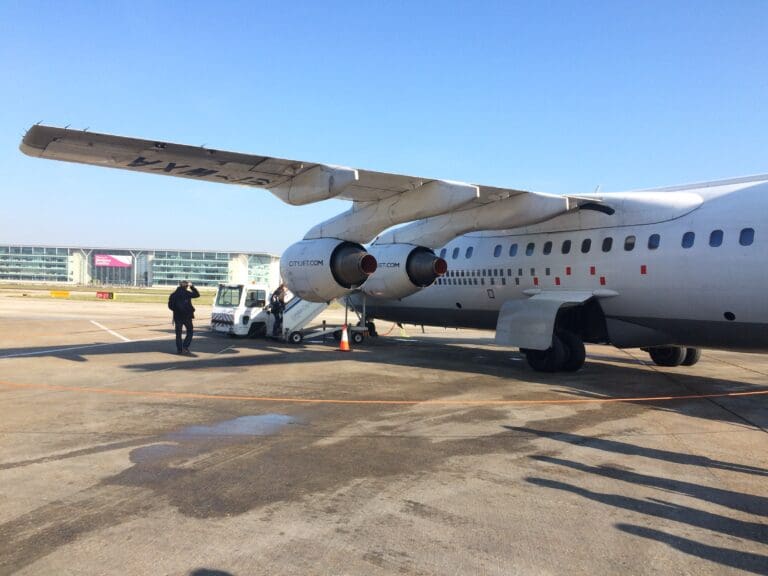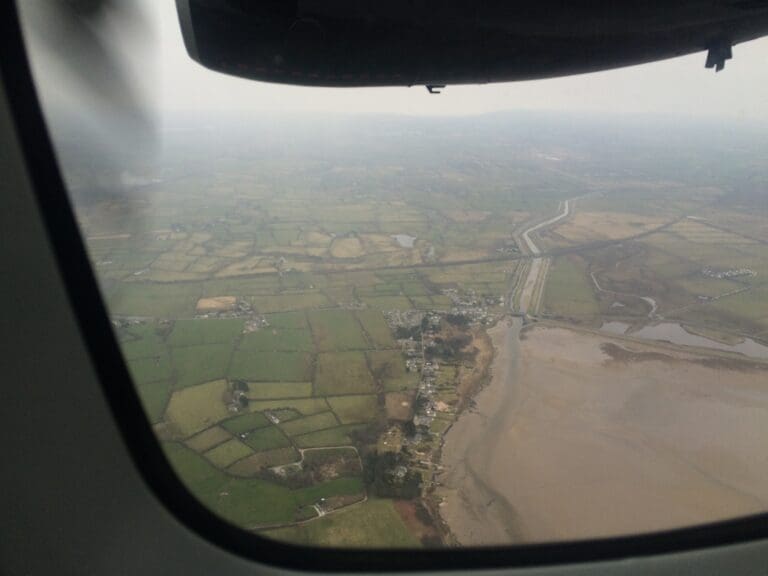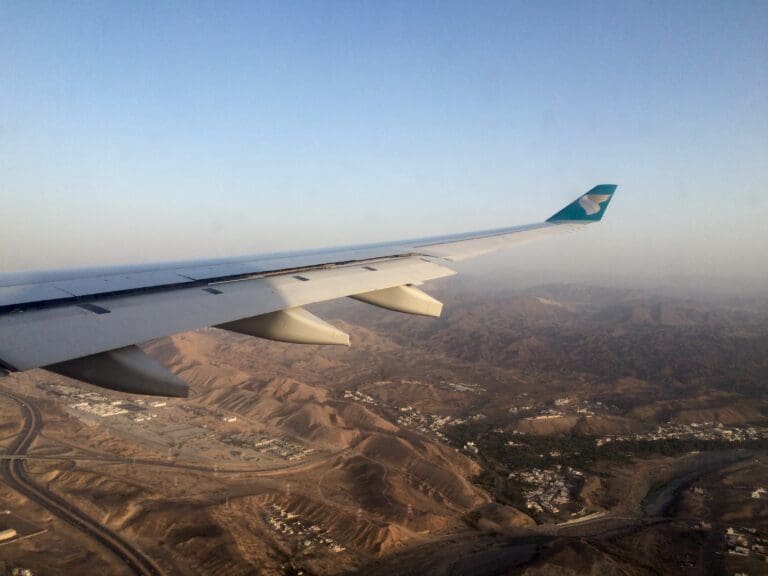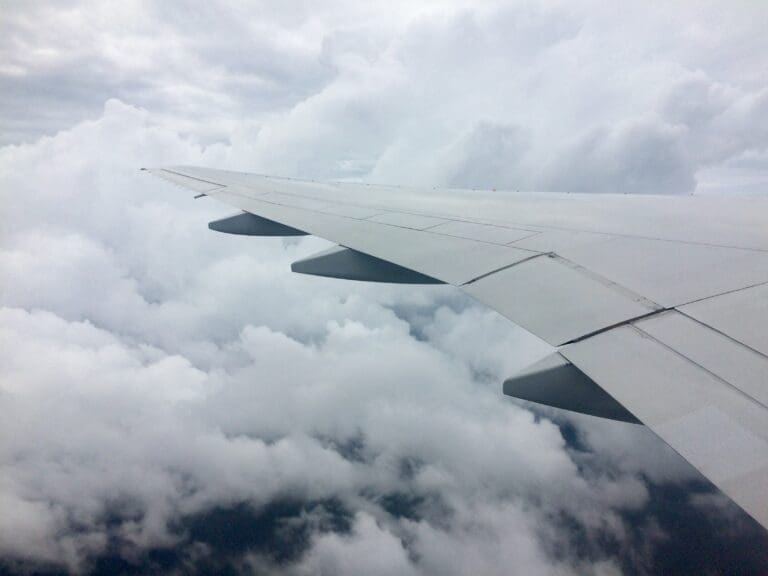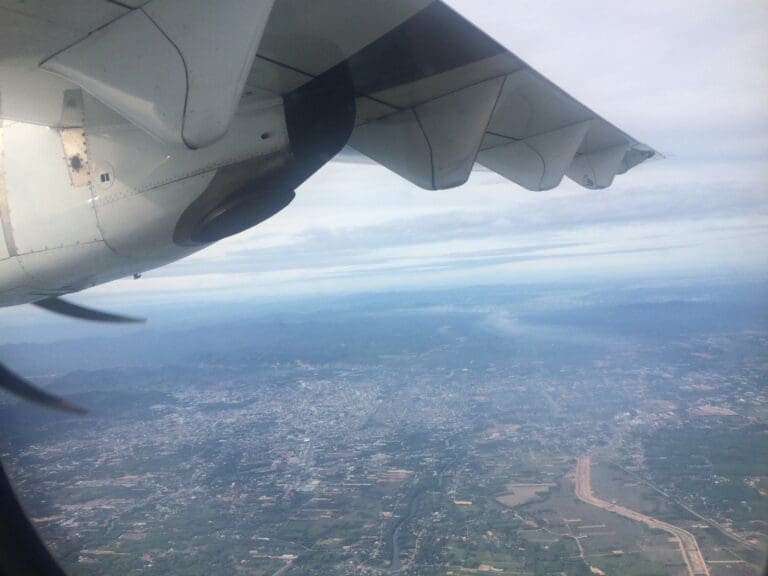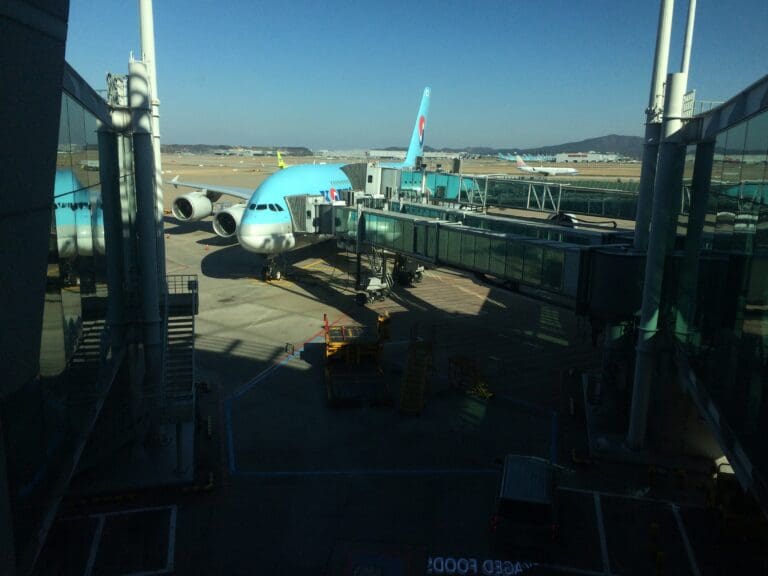Riding the Embraer 190 with Georgian Airways: Kyiv to Tbilisi
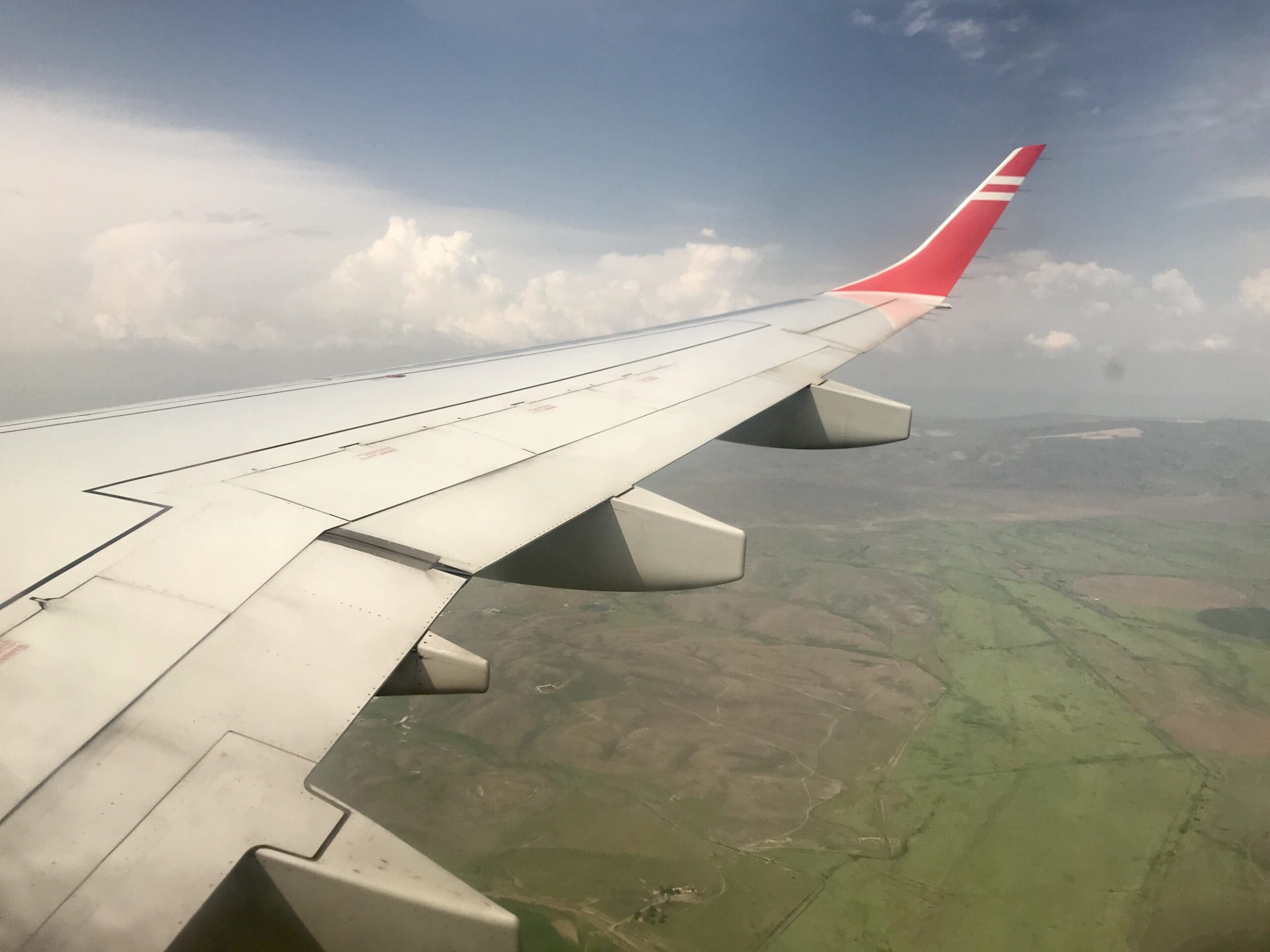
Following a boiling hot and cramped flight over from London Gatwick on a Ukraine International Airlines Boeing 737-800, my father and I touched down at Kyiv Boryspil Airport at 0400. Whilst I am not averse to sampling the delights of UIA’s ‘new’ Boeing 777-200ERs, I would most definitely not be too keen on flying onboard any of the airline’s Boeing 737s on their longer routes such as those to Central Asia or Dubai. Seeing as many of those onboard the service from Gatwick were connecting onwards to international destinations, and, appearing to be the only international arrival at that time, immigration was a speedy process that took no more than five minutes to clear.
Having pre-empted our fatigued state, with nine hours to spare until our flight to Tbilisi, we had researched the location of the airport hotel and thus made our way outside and commenced the five-minute walk to the building. With no option to prebook a non-overnight stay and having failed to contact the hotel in advance, we hoped that a room would be available to allow us some rest before the next leg of our trip. Fortunately, we were in luck and within thirty minutes of our inbound flight arriving in Kyiv, we arrived at our home for the next few hours. Whilst the hotel can hardly be described as five-star, it is most certainly sufficient for those wanting to get a few hours of rest before or after their flight, and being easily reachable on foot from the terminal, it is highly convenient.
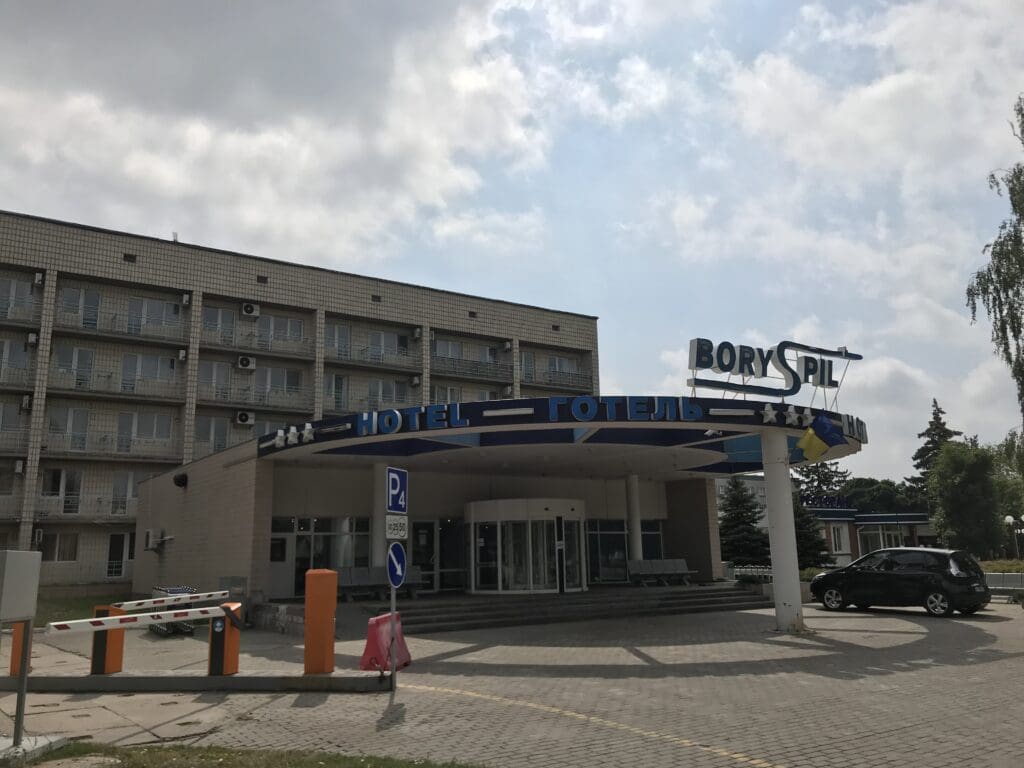
After a five-hour sleep, I woke up, had a shower and donned a new set of clothes in preparation for the next leg of our journey to Georgia. Despite only being 1030 in the morning, the summer heat and humidity had already engulfed Kyiv and I found myself building up a sweat on the short walk over to the terminal. Whilst I believe the checkpoint has now been removed, back in 2018, like many airports in the former Soviet Union, all those entering the terminal had to pass through a metal detector and all bags had to be x-rayed. Thankfully, this was a rather quick and straightforward process and we soon found ourselves heading up a couple of escalators to the spacious yet slightly busy international check-in hall.
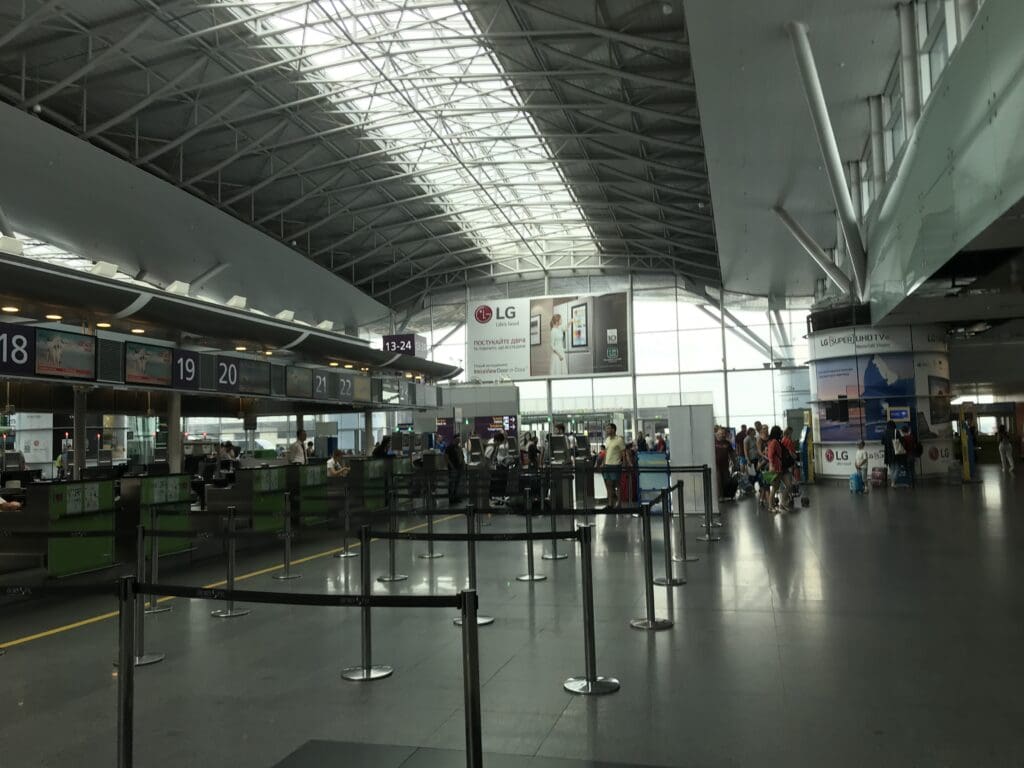
At one end of the hall, two Georgian Airways counters could be seen and as we approached these, crowds of holidaymakers came into sight giving the impression that some queueing would be required. However, as it turned out, these passengers were not queuing for our flight but were instead bound for the beaches of Turkey, waiting to check in for a UIA flight to Dalaman which had been assigned to the neighbouring desks. Fortunately, the two staffed Georgian Airways counters were completely deserted so we were able to walk straight up to these without any waiting whatsoever. After some furious typing, the friendly check-in agent handed us our two plain boarding passes which featured our pre-selected during the online check-in process, crossed our names off a list, tagged our bag and sent this into the airport.
All in all, the landside experience that morning was a breeze, and the first queue we encountered was at immigration where we found ourselves waiting behind several families heading off on holiday. Within around fifteen minutes, I reached the front of the queue and I was given the usual interrogative glances up and down as my passport was scanned before I received an exit stamp and was allowed to pass through to the airside area.
Kyiv Boryspil’s airside area consists of a long rectangular modern terminal which at 1100 that Saturday morning seemed relatively quiet and clean. Here, as with pretty much any major international airport, one can find multiple duty free and tourist shops, cafes and restaurants selling goods at slightly inflated prices. Meanwhile, as one ought to expect, free wifi was also provided which seemed to work well throughout the terminal. For aviation enthusiasts, excellent views of both most of the terminal’s gates as well as one of the airport’s two runways is offered thanks to large windows that run the length of the terminal. In terms of traffic, it is fair to say that UIA aircraft make up the bulk of the movements with many of their Boeing 737NGs visible during our stay. Aside from these, a selection of the airline’s other jets such as their since retired Boeing 737 Classics as well as their Boeing 767-300s, Boeing 777-200ERs and Embraer 190s could also be seen. However, that is not to say that foreign visitors were absent during our stay; before the appearance of the Georgian Airways Embraer, we noticed an Azerbaijan Airlines Airbus A320 and a CSA Czech Airlines Airbus A319, the latter sporting the special ‘Fly to the City of Magic!’ livery. Meanwhile, over in the distance, a selection of both stored and active Soviet-built aircraft could be seen.
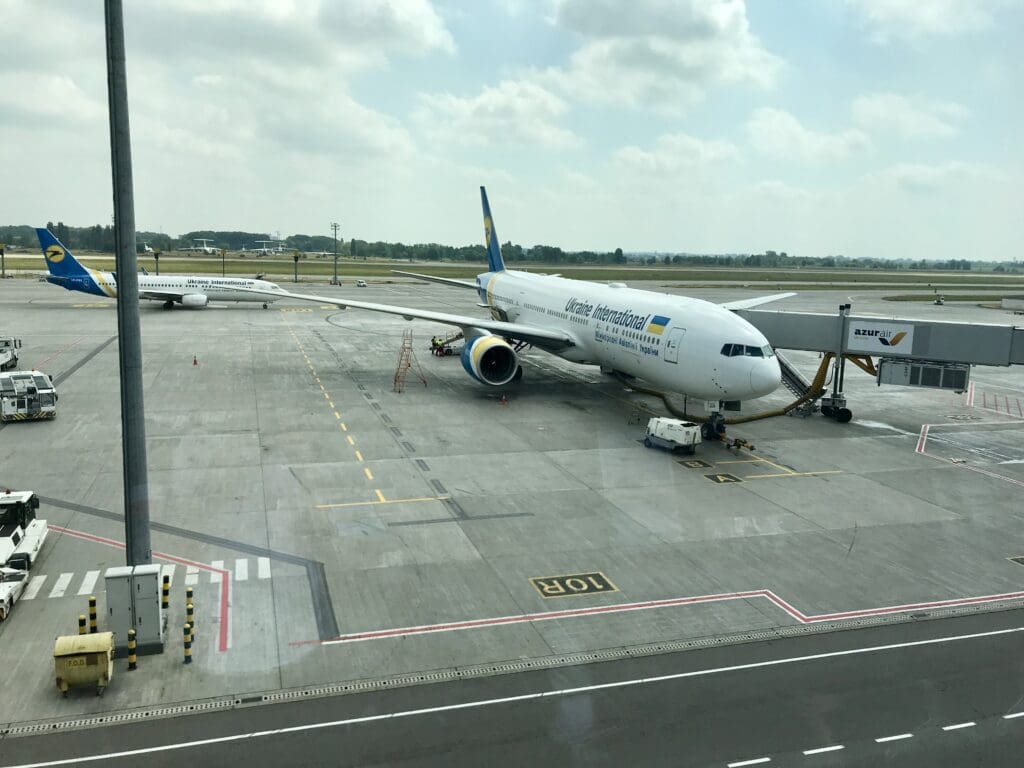
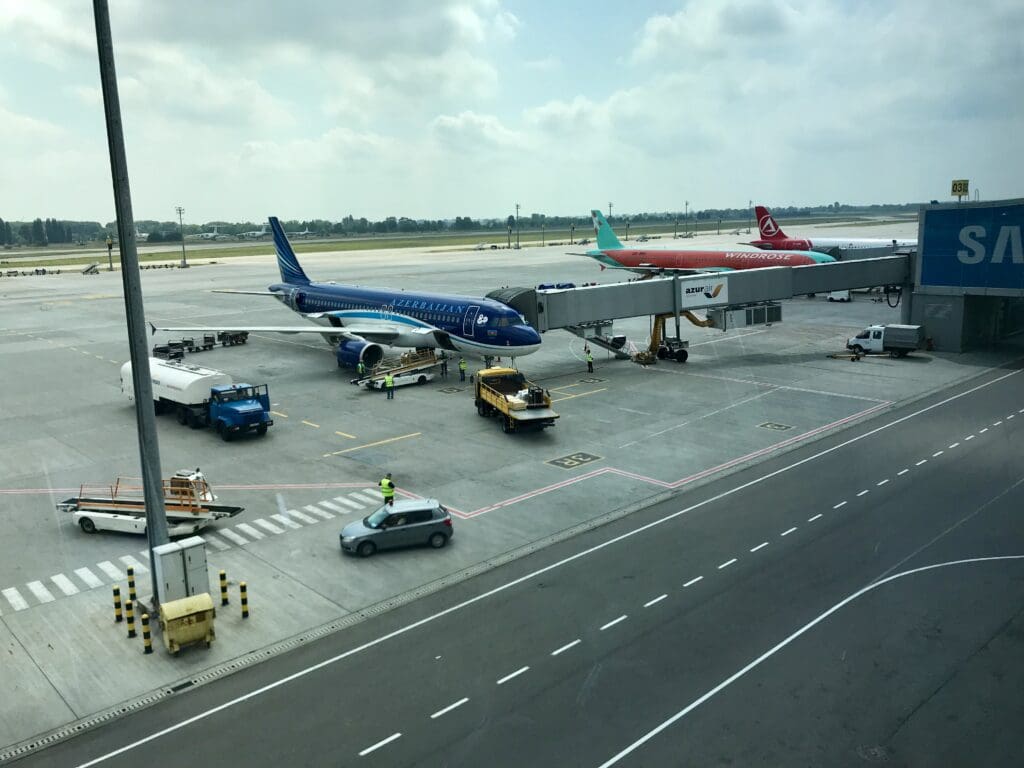
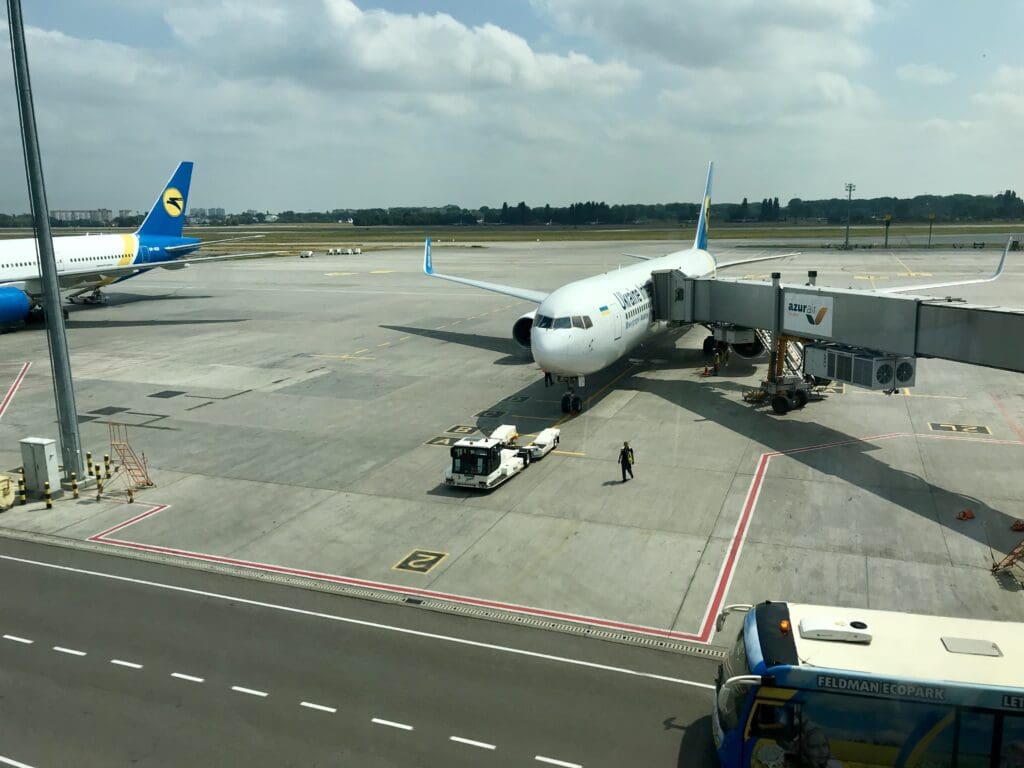
Having not had anything to eat since leaving London, as we waited we decided to have an unorthodox breakfast of hotdogs from a nearby stall. Costing 99 hryvnia (about £2.76/€3.06), these were not exactly cheap although they were both filling and tasted rather good. After finishing these, we caught sight of the mostly white Embraer 190 that would take us down to Georgia as it prepared to turn off the runway almost twenty minutes early at 1151. As soon as it exited this, the jet came to a halt whilst it waited for a follow-me car which then guided it the short distance over to one of the gates below where it slotted in between the two aforementioned Airbus aircraft. According to both the departure boards and our boarding passes, boarding was scheduled at 1210, the inbound flight’s scheduled arrival time and fifty minutes prior to departure. In spite of my doubts that boarding would actually commence at this time, at 1210 an announcement was made inviting all passengers to head to the gate. After a leisurely stroll over to the gate, we arrived to find that boarding was already in progress and so we joined the reasonable queue of waiting passengers. Following a couple of minutes of slowly moving forward, our boarding passes were scanned and we entered the jetbridge. However, once there, it became apparent that the aircraft was still being readied for the journey and boarding had not commenced resulting in another wait.
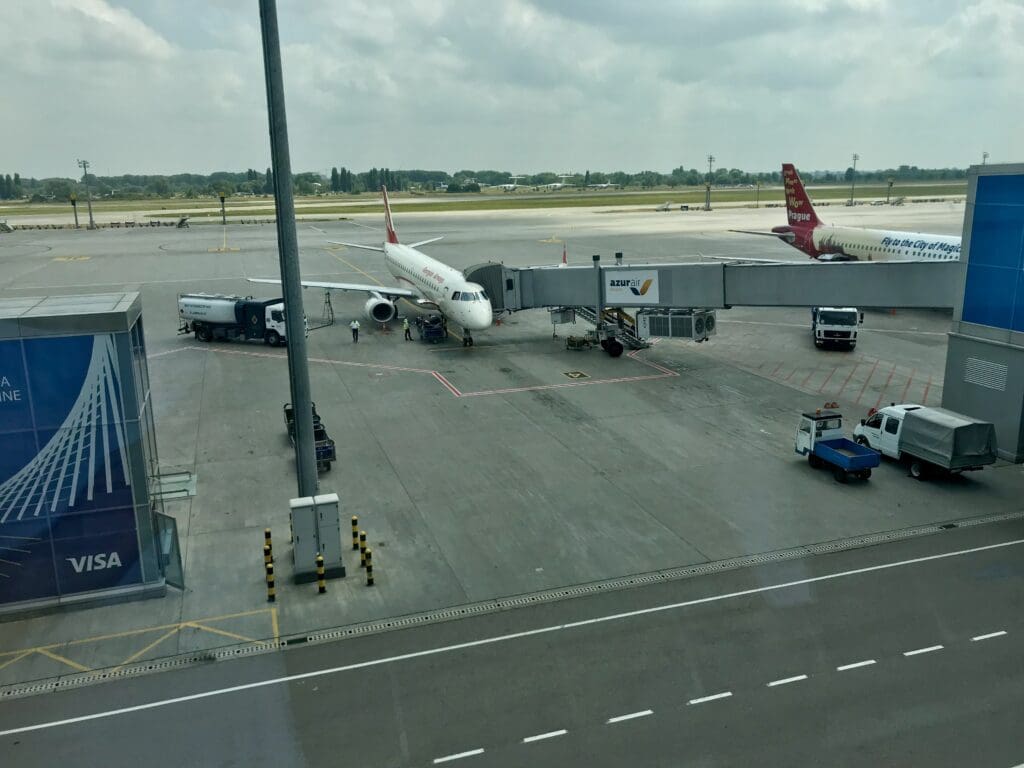
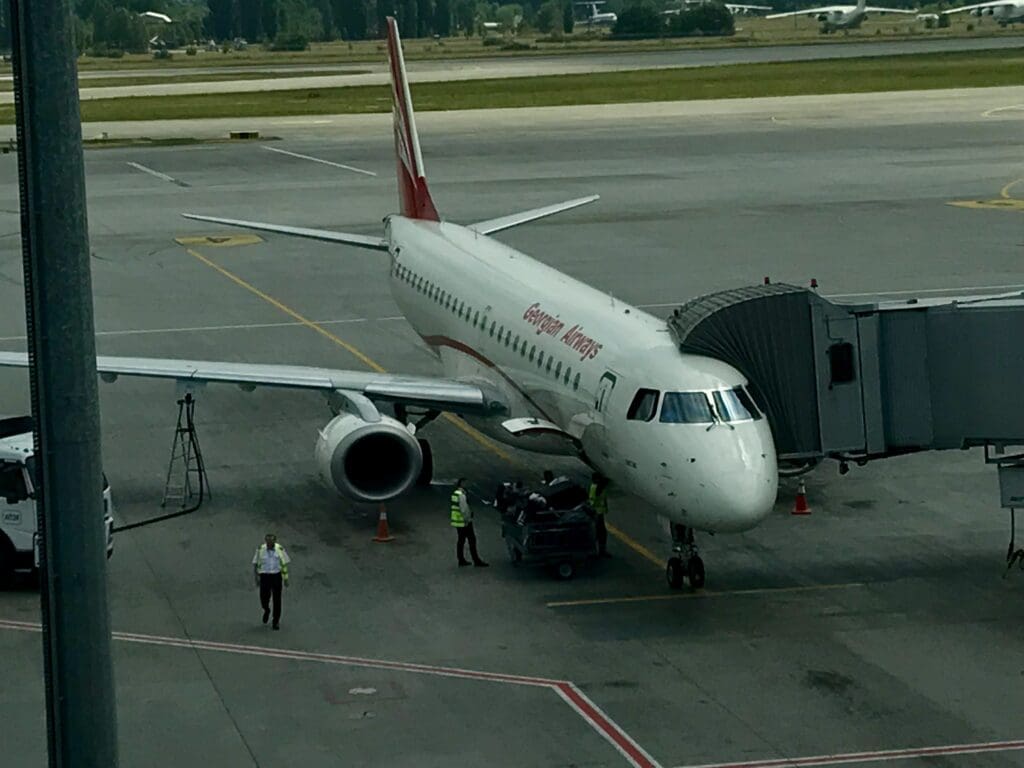
Outside, 11 year old Embraer 190AR 4L-TGU could be seen waiting to commence its journey back to Georgia that afternoon. Manufactured at Embraer’s plant in São José dos Campos near São Paulo, the aircraft first took to the Brazilian skies in January 2007 with the test registration PT-SJC. By the end of the month, the aircraft was given the registration C-FHKS and made its way north to Canada where it flew with Air Canada. During its time with the airline, the aircraft appears to have fallen victim to a host of inflight issues, particularly between 2010 and 2013. In March 2010, during a flight between Toronto and Edmonton, the PTV of Seat 17C began to emit smoke and started melting during a flight from Toronto to Edmonton. Only two months later in May, whilst flying between Winnipeg and Calgary the aircraft’s right-hand engine flamed out before returning to life. In August of the following year during another flight from Toronto to Edmonton, the aircraft returned to the former after experiencing pressurisation issues and in November wake turbulence resulted in the aircraft experiencing an uncommanded roll whilst on approach to Toronto. In October 2012 and March 2013, the aircraft was once again plagued by pressurisation problems, with the latter event determined to be the result of a leaky seal of the L1 door.
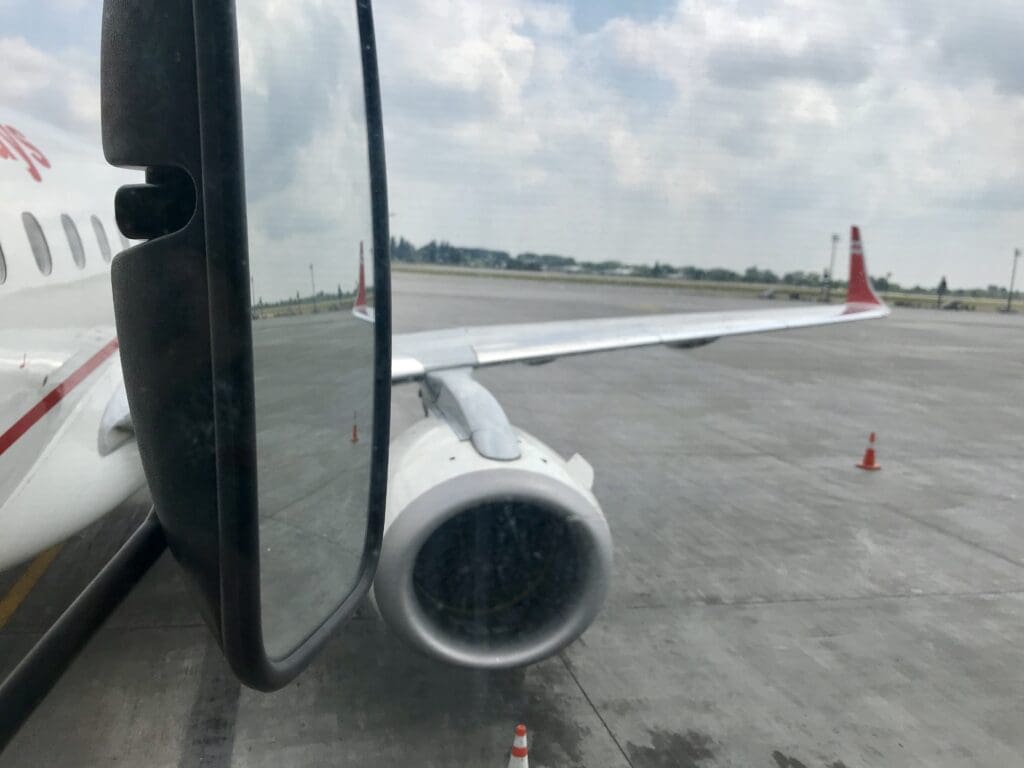
After nine eventful years in service with Air Canada, the aircraft headed southwards to one of the US’s famous desert aircraft graveyards, in this case being sent to Arizona’s Pinal Airpark. There, it was wore the American registration N694BC before finally returning to the skies after over a year in storage. In 2017, the all-white aircraft headed eastwards across the Atlantic to Norwich Airport in the UK where it was given a Georgian registration before heading eastwards again to the Georgian capital, Tbilisi. After being painted in Georgian Airways’ livery and named after the Black Sea city of Batumi, the nation’s second-largest city, the aircraft entered service as the airline’s first Embraer 190. In the week before my flight, the aircraft had flown 33 flights totalling over 45,250 miles connecting Tbilisi with Barcelona, Bratislava, Brussels, Kyiv Boryspil, London Gatwick, Paris CDG, St Petersburg, Tel Aviv and Yerevan. Reassuringly, unlike its time at Air Canada, according to the AvHerald, the aircraft had not experienced any problems during its time in service with Georgian Airways.
After a couple of minutes spent waiting on the jetbridge, passengers were allowed to board the aircraft and so we slowly shuffled towards the waiting regional jet. As I stepped into the small forward galley, I received nothing by means of a greeting from either of the two stony-faced flight attendants standing there. Turning right, I passed through the three aisles of comfortable-looking business class seats in a 2-1 configuration before reaching the 84-seat economy cabin. Except a change of the signage onboard from English and French to Georgian and English, as well as a change of antimacassars (red in business class and turquoise in economy – both featuring Georgian Airways’ logo), the aircraft appeared to have undergone no changes since its time with Air Canada. As such, each seat was covered in Air Canada’s green/blue-ish fabric featuring a black dotted pattern and comes with both a inflight entertainment screen and a USB-A port. Even though Georgian Airways deploys their Embraers on fairly long routes to Western Europe, the airline has not yet made use of these screens and so these remained inoperable for the flight, whilst the same applied to the USB-A ports.
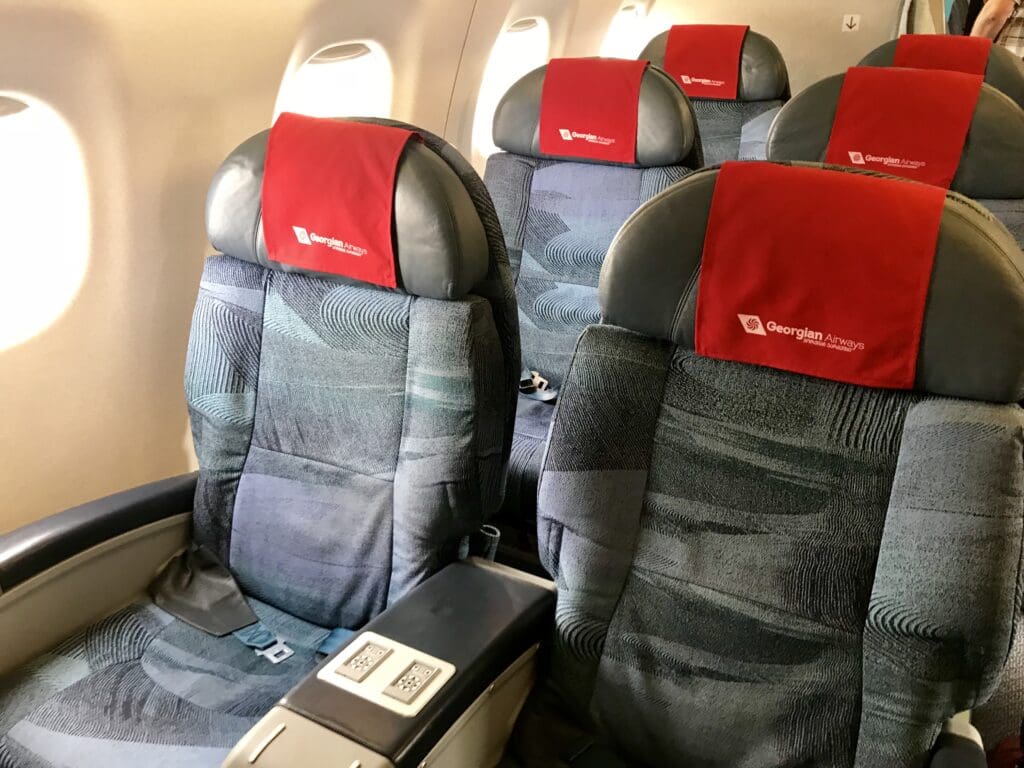
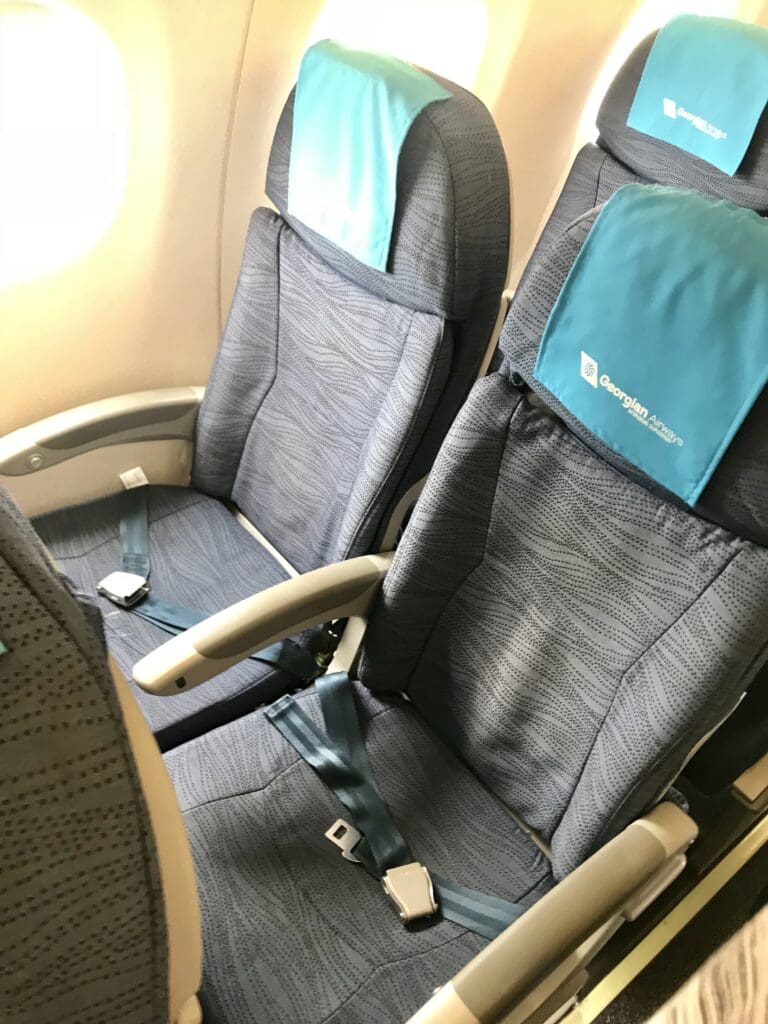
Approximately two minutes after stepping into the cabin, we arrived at row 17, taking our seats in C and D on the starboard side of the aircraft. Upon sitting down I was pleased to find that the seats were well padded and reasonably spacious, especially when compared to the UIA Boeing 737 we had taken several hours previously. Examining the area around the seats, unfortunately, whilst seemingly clean, the cabin appeared to be rather worn and battered with plenty of marks and scratches visible. Turning to the seatback pocket, these contained the summer 2018 edition of the airline’s self-titled inflight magazine, a safety card and various advertisements – namely a leaflet for a wine resort, a small pamphlet promoting new developments across Georgia and a flyer for a proposed apartment complex in Tbilisi. Whilst not a major complaint, such advertisements did make the airline seem a little bit LCC-like.
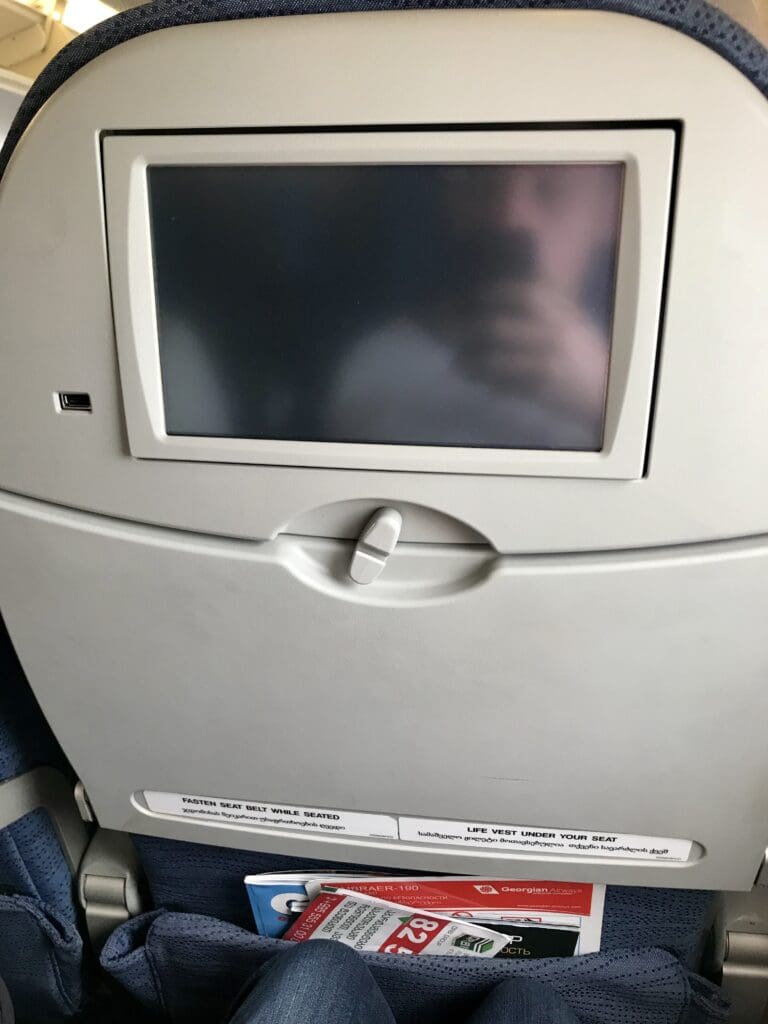
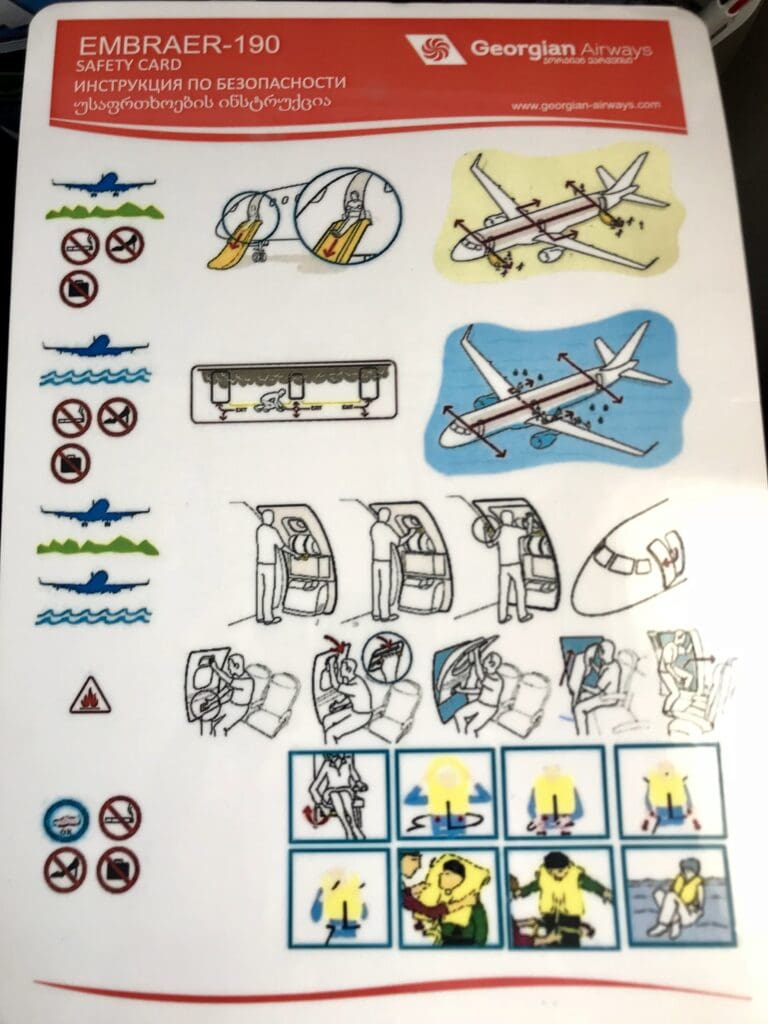
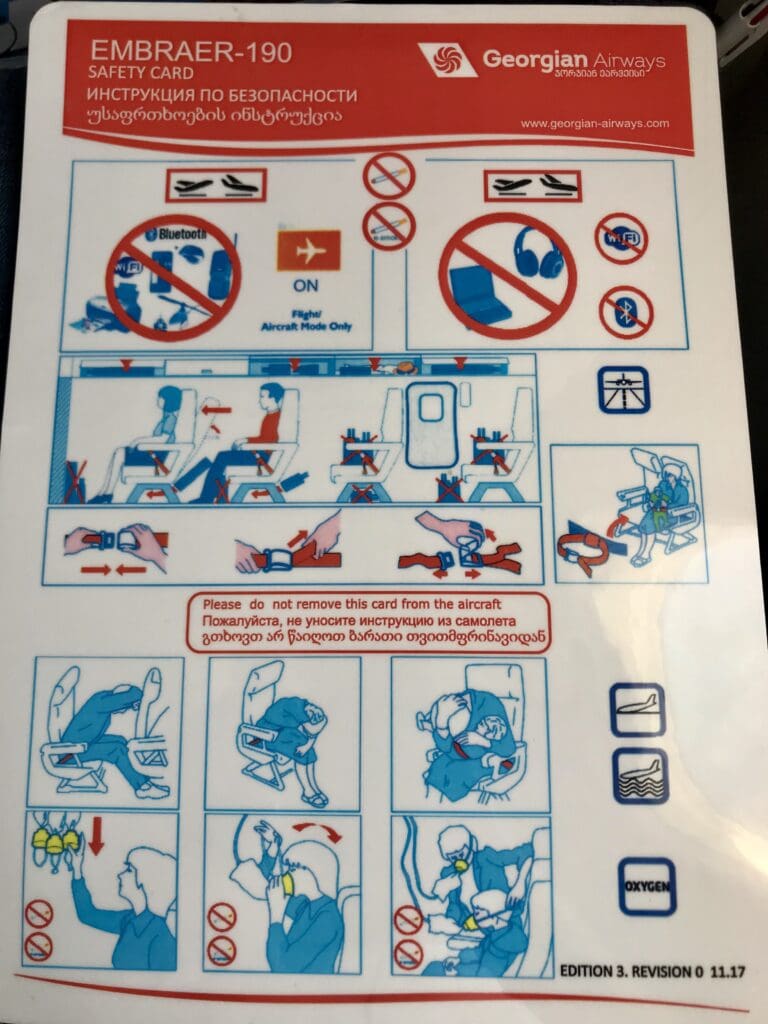
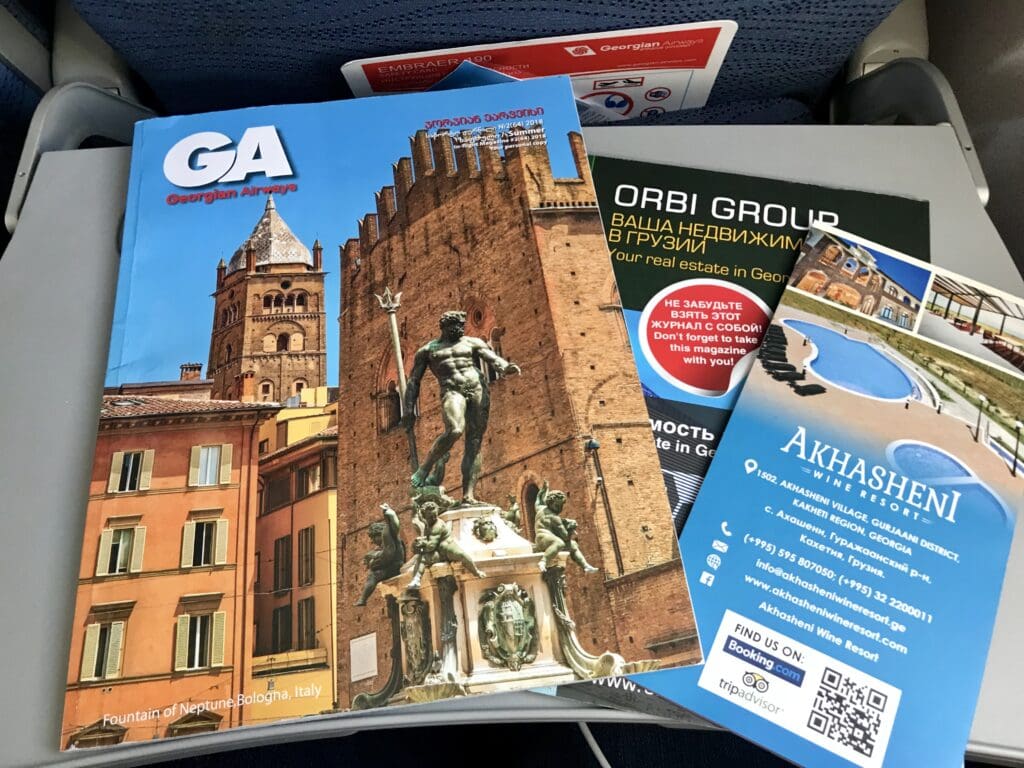
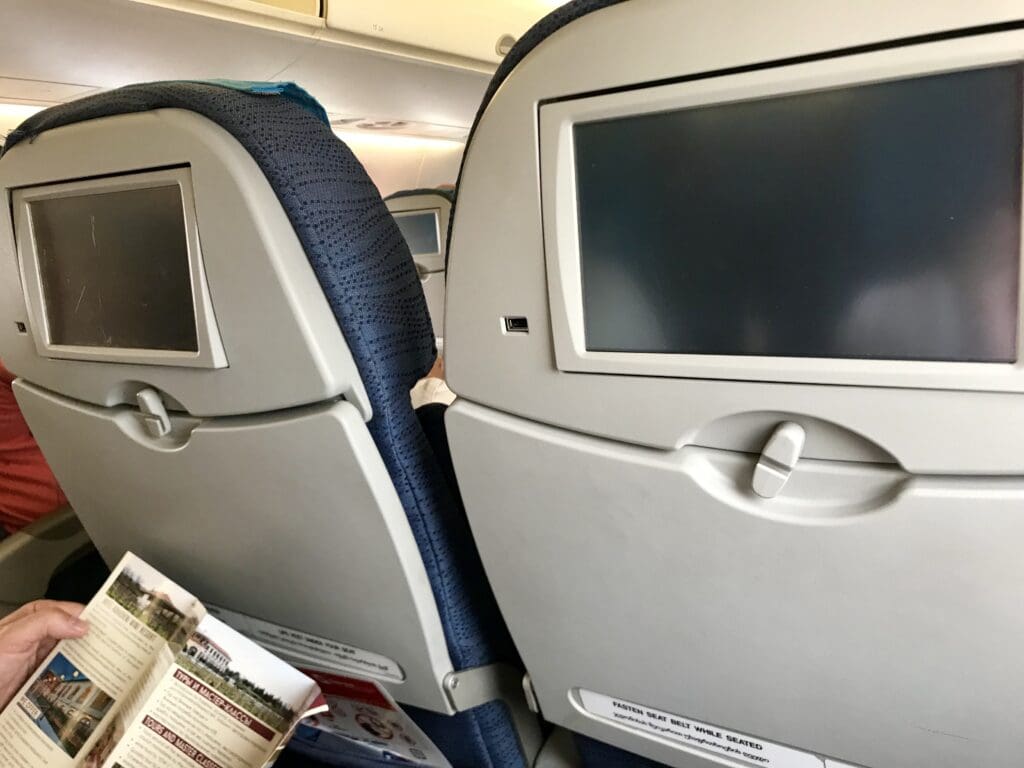
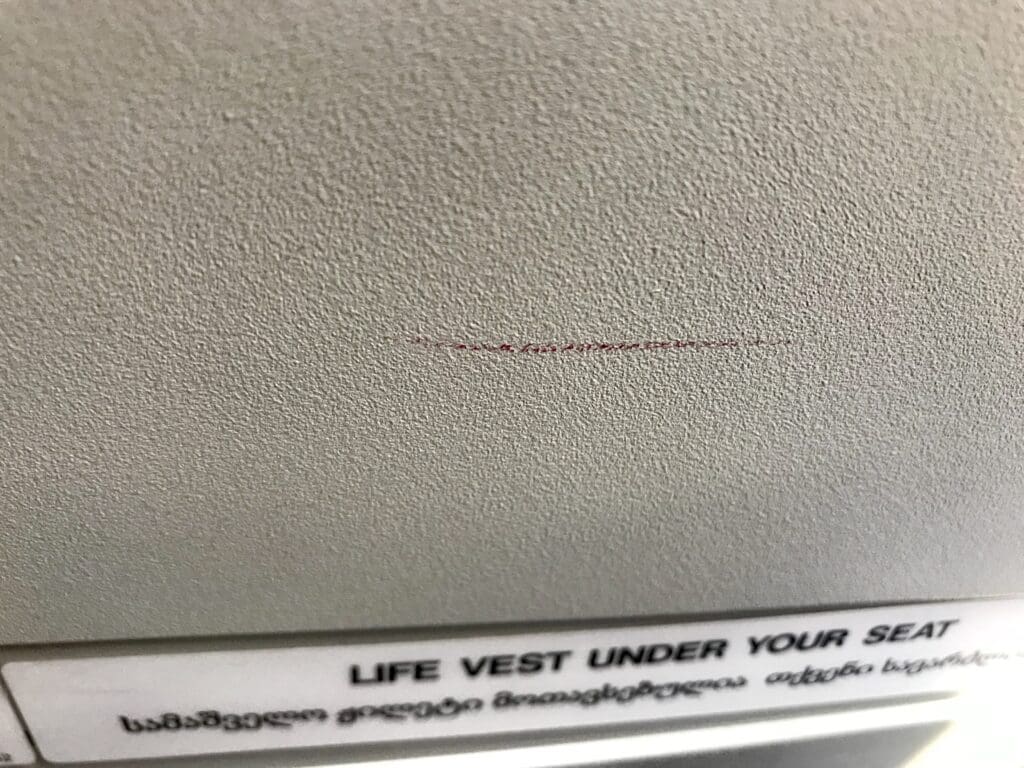
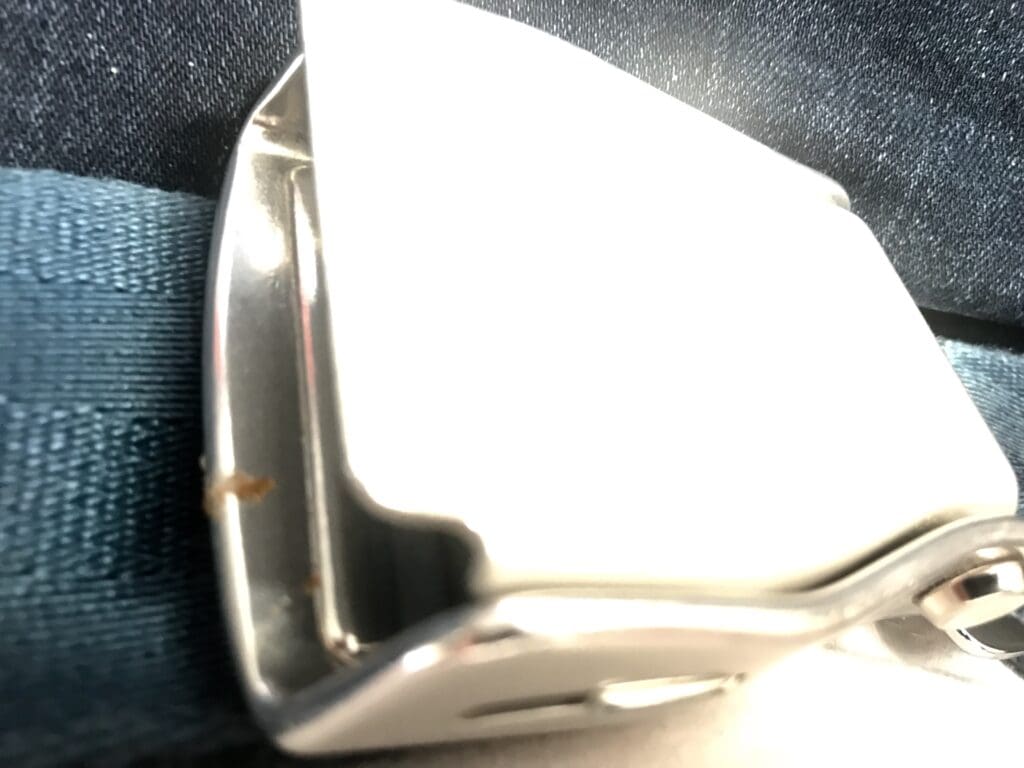
As the minutes passed, passengers continued to stream onto the aircraft until the cabin appeared to be virtually full. Still with 25 minutes to go until the flight’s scheduled departure time, the words ‘boarding complete’ rang out through the cabin and looking ahead the main cabin door was soon closed in preparation for our departure. As one may expect on a flight between Ukraine and Georgia on a Georgian carrier, most passengers were from these two countries although I did notice a couple of passengers from Poland who were easily identifiable thanks to their Polish national football team related clothing. Once the cabin door was closed, the purser performed a welcome announcement in Georgian and English. After this, a safety demo was then performed which was rounded off with an announcement proudly proclaiming the airline’s commencement of flights to new destinations in Europe and the expansion of the airline’s fleet with two new aircraft – presumably referring to the two Embraers added in June 2017 and December 2017.
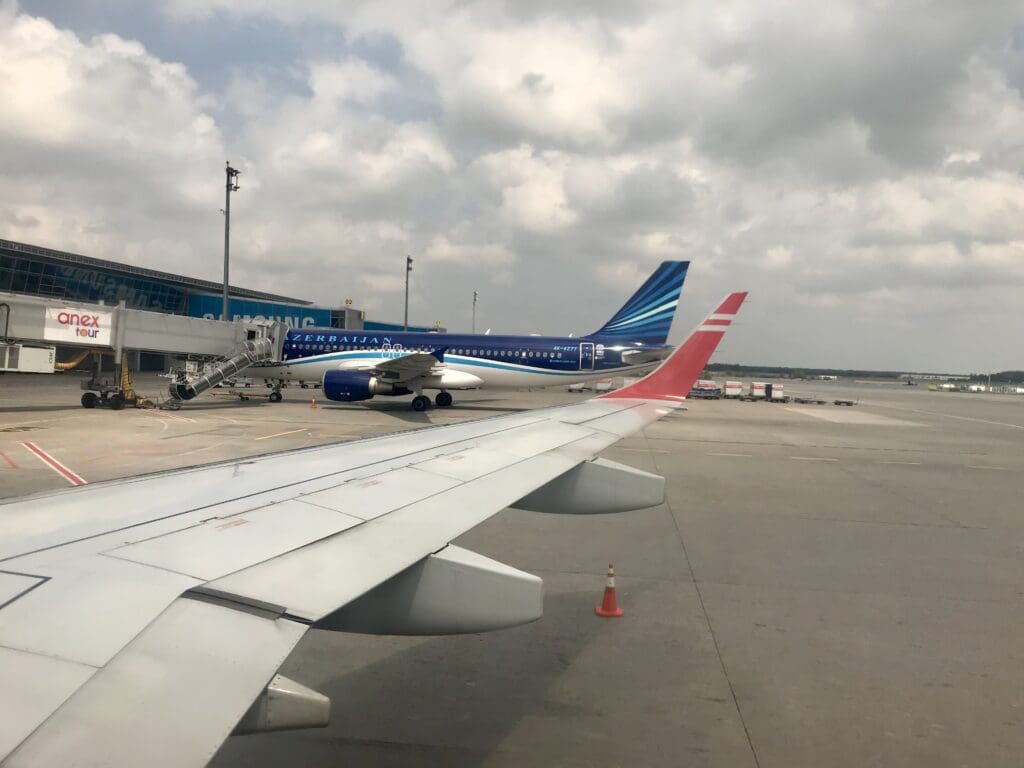
At 1240, the aircraft jolted backwards as we commenced our pushback away from the terminal, during which the two General Electric CF34 engines powered into life ready for the journey ahead. By the time the aircraft came to a halt, both engines appeared to have powered up and after a couple of minutes whilst the tug was disconnected, the aircraft began its taxi over to runway 36R. After leaving the ramp, the aircraft made its way passed the airport hotel and soon reached the end of the runway where the jet paused for several minutes. As soon as an Austrian Airlines Embraer 195 touched down at the end of its flight from Vienna, at 1249 the aircraft taxied onto the runway and came to a pause. Once the Austrian aircraft had vacated the runway, the aircraft’s engines powered up and the jet conducted what seemed like a gentle takeoff roll, eventually rotating upwards into the skies and undertaking a shallow climb.
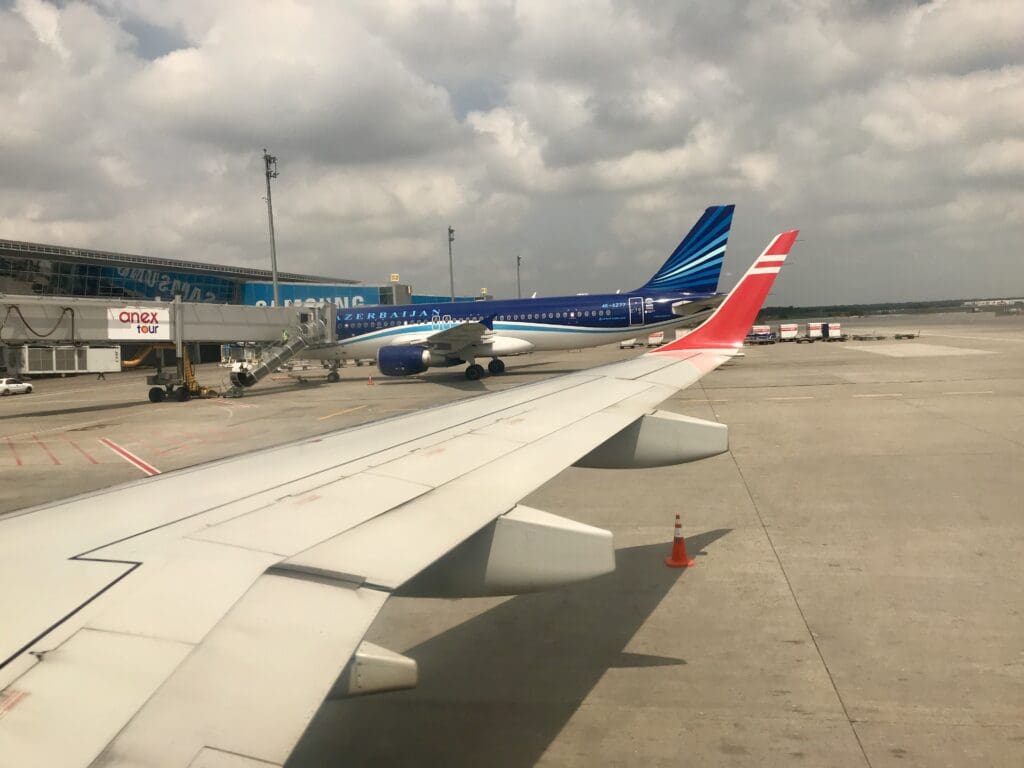
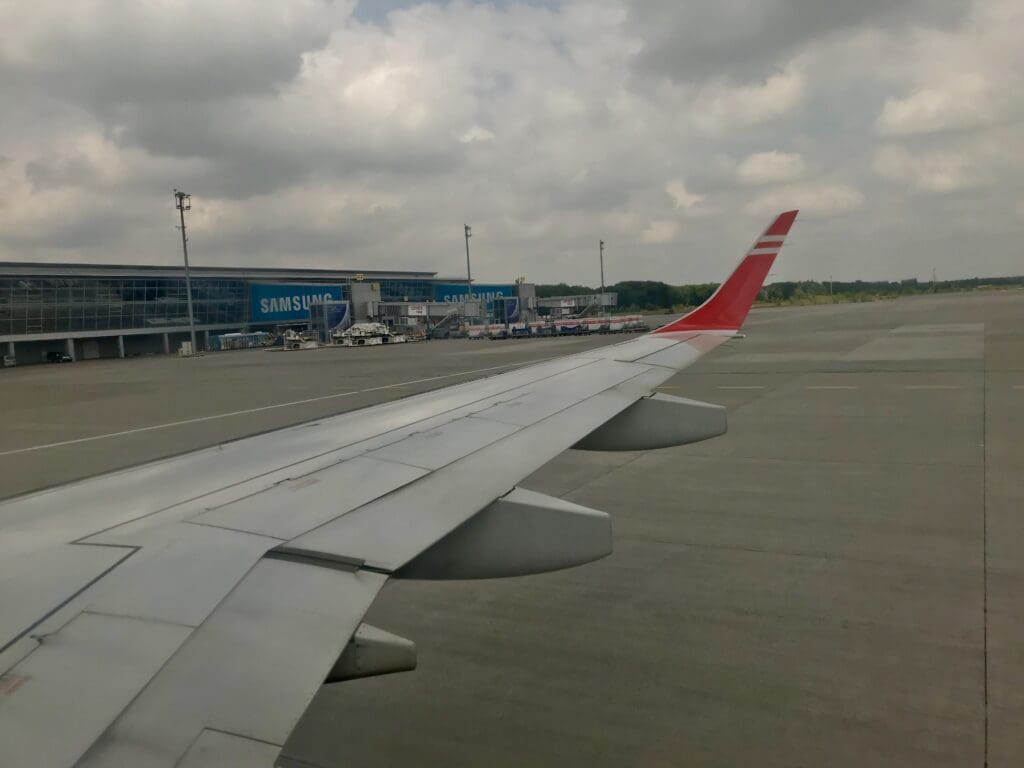
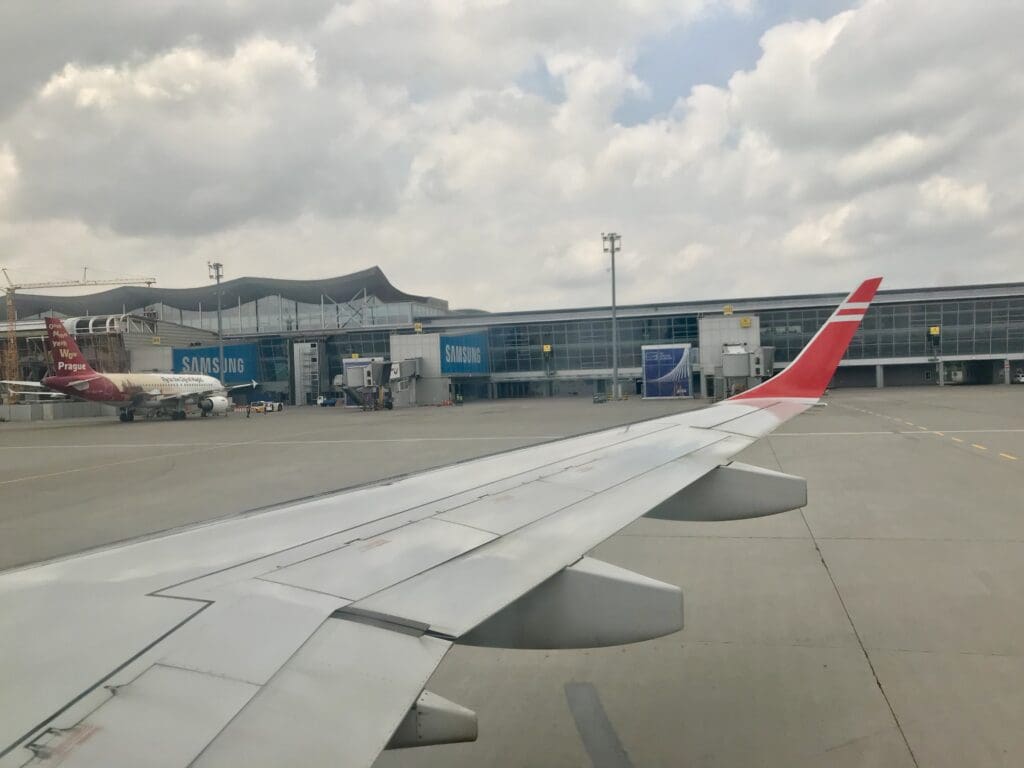
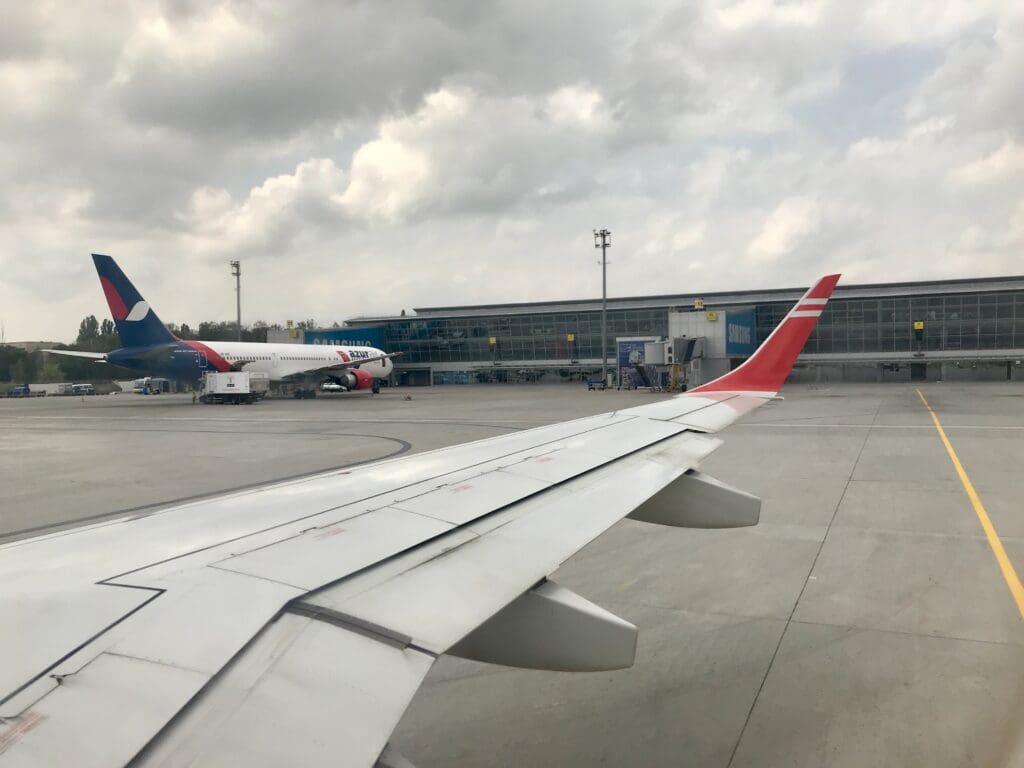
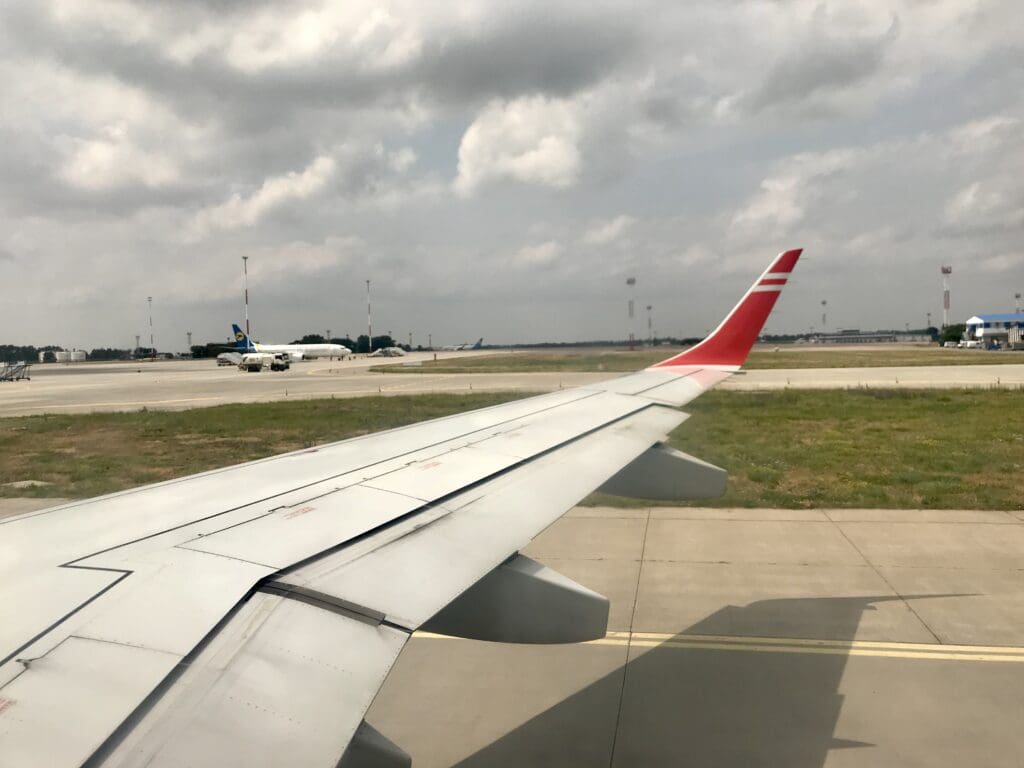
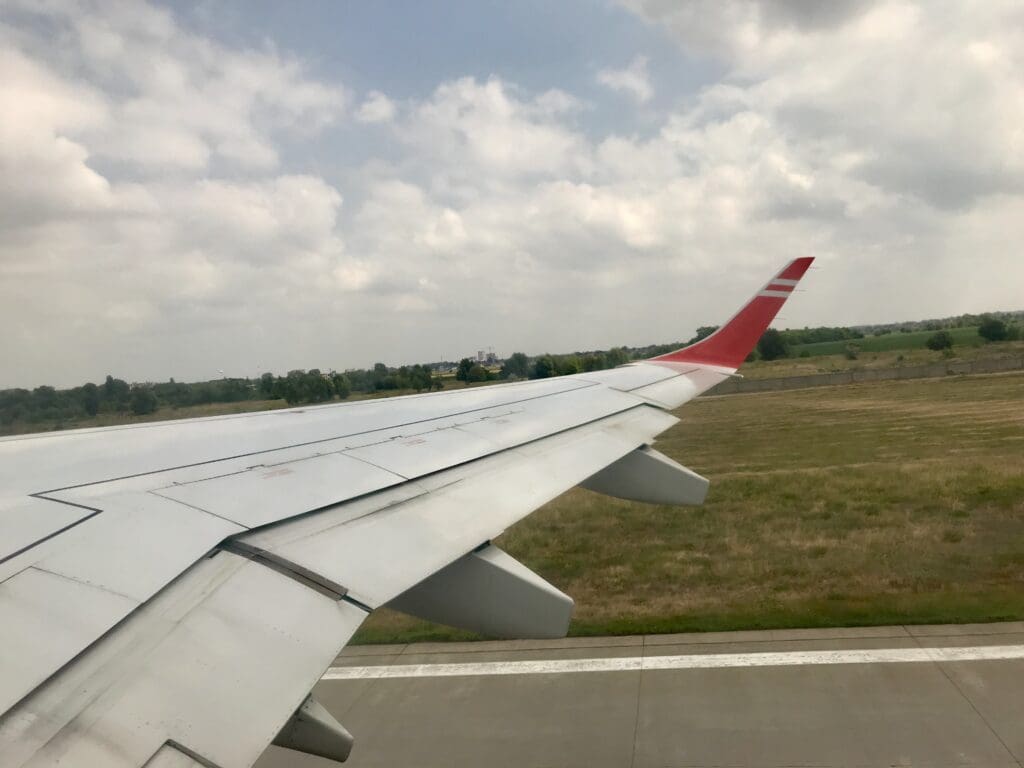
Once in the skies, good views of the airport’s boneyard could be had before the Embraer left Boryspil Airport behind before banking left and rolling out on a southerly heading. Unfortunately, that day the skies of Ukraine were largely cloudy and so only a few minutes after our departure, the aircraft ascended through the layer of clouds with several bumps after which nothing could be seen of Ukraine below. After emerging above the clouds, the remainder of the climb up to 37,000 feet was rather smooth and uneventful as the aircraft sped southwards to the Black Sea port city of Odessa. Owing to obvious political reasons, flights between Ukraine and Georgia are unable to take the most direct route which would involve flying over Eastern Ukraine and the Russian Caucasus. Instead, from Kyiv aircraft must fly south to the Black Sea, and skirt around Crimea before turning to the east just to the north of the Turkish coastline, flying parallel with this before making landfall north of the Georgian coastal city of Batumi.
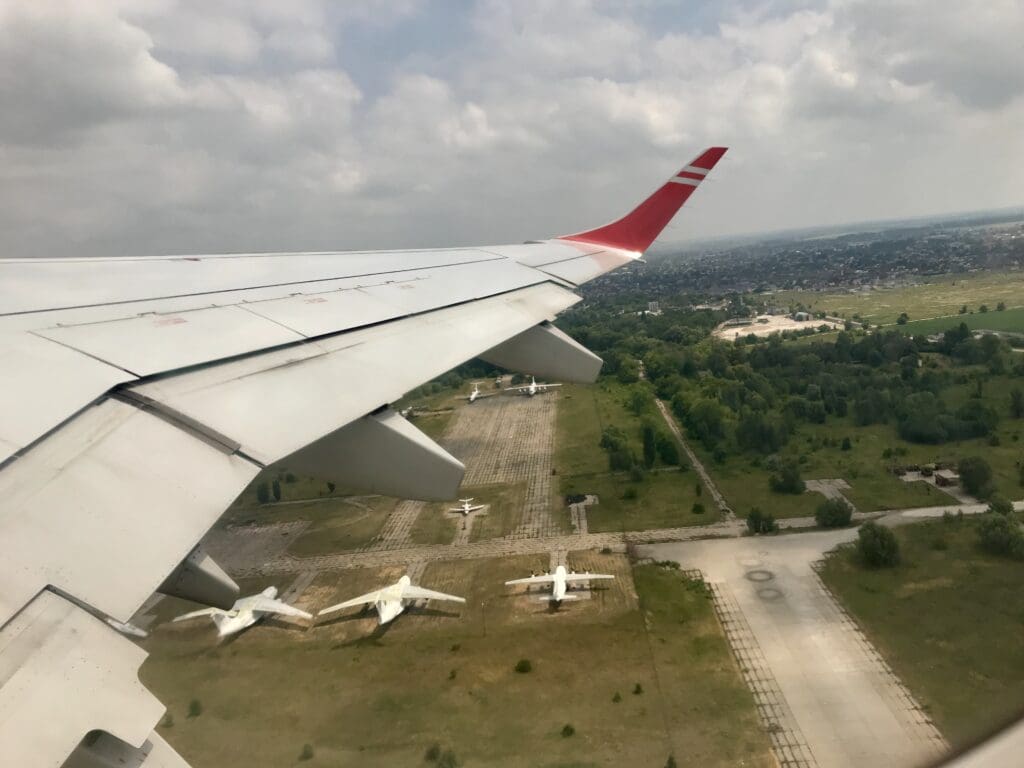
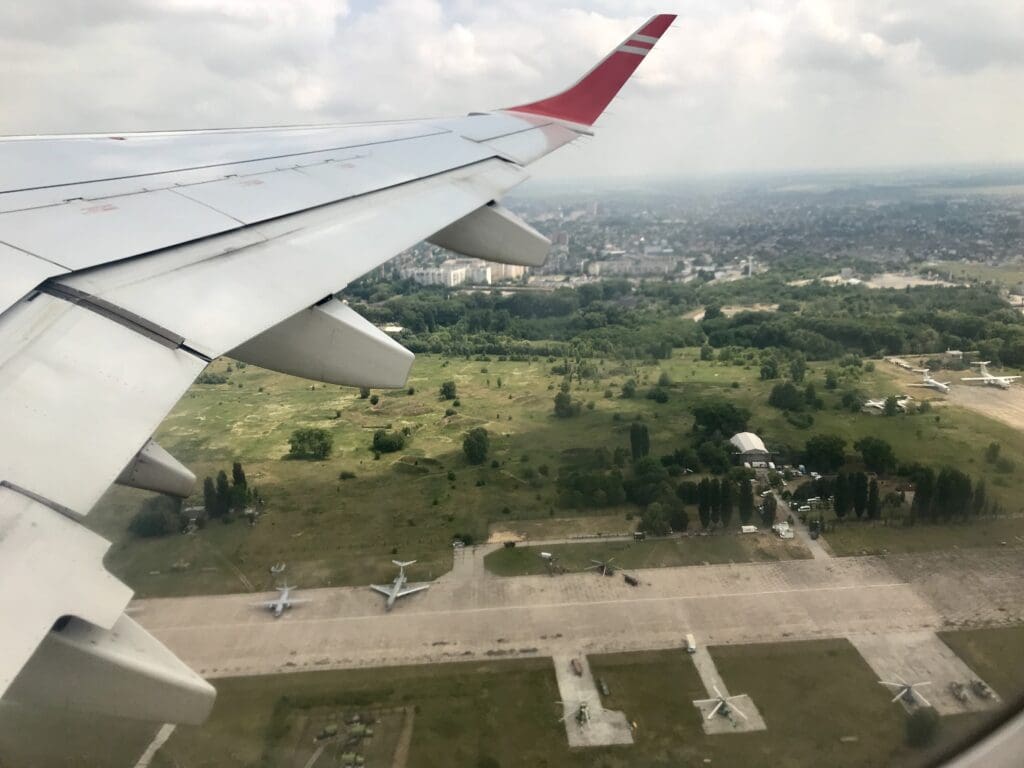
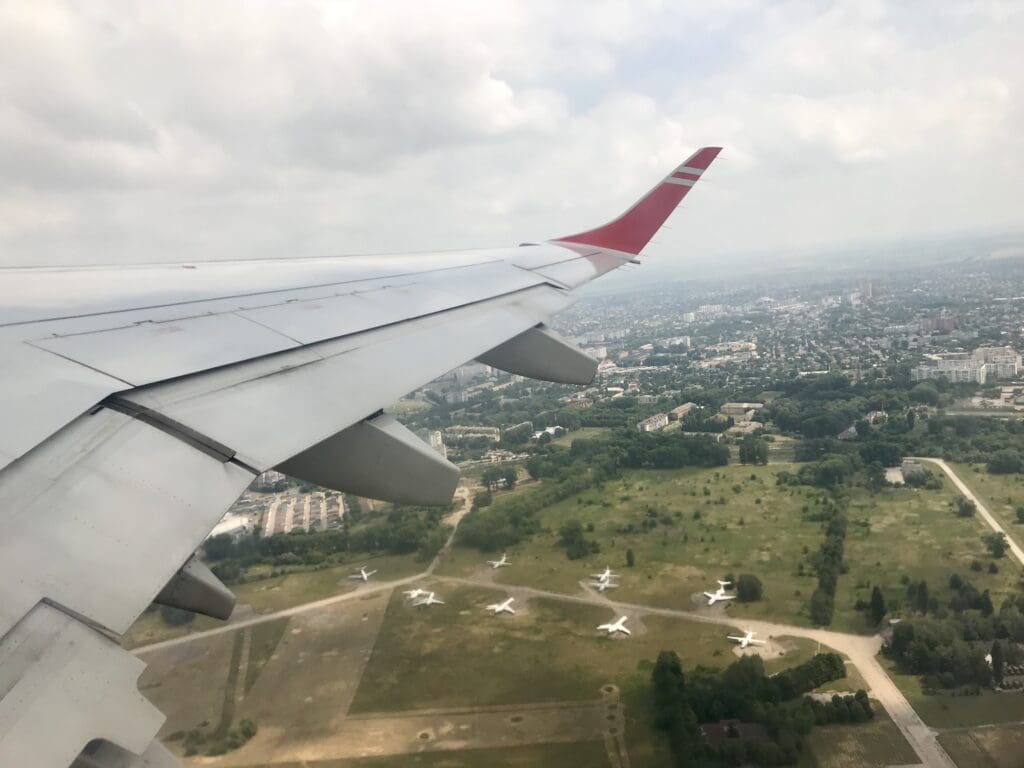
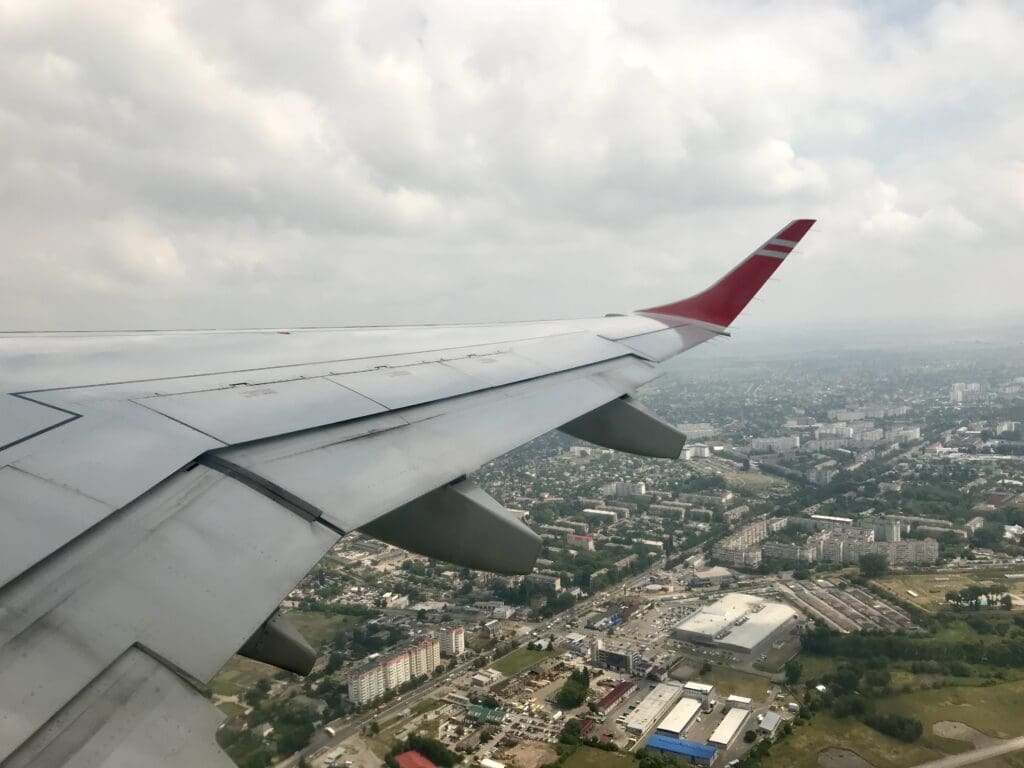
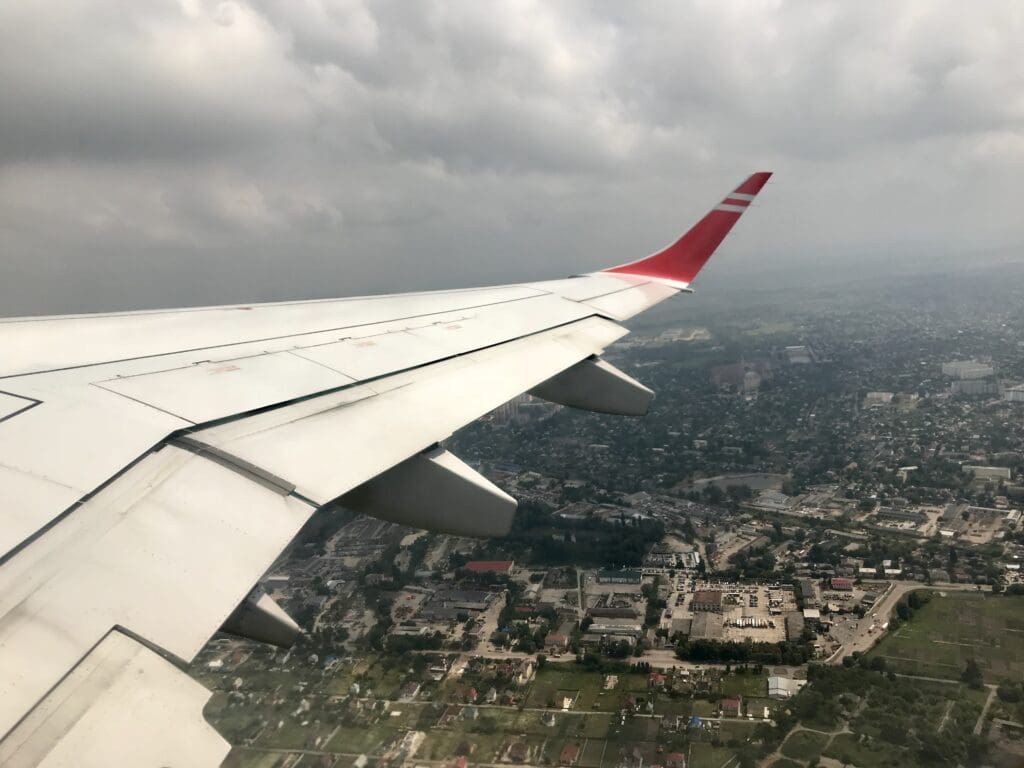
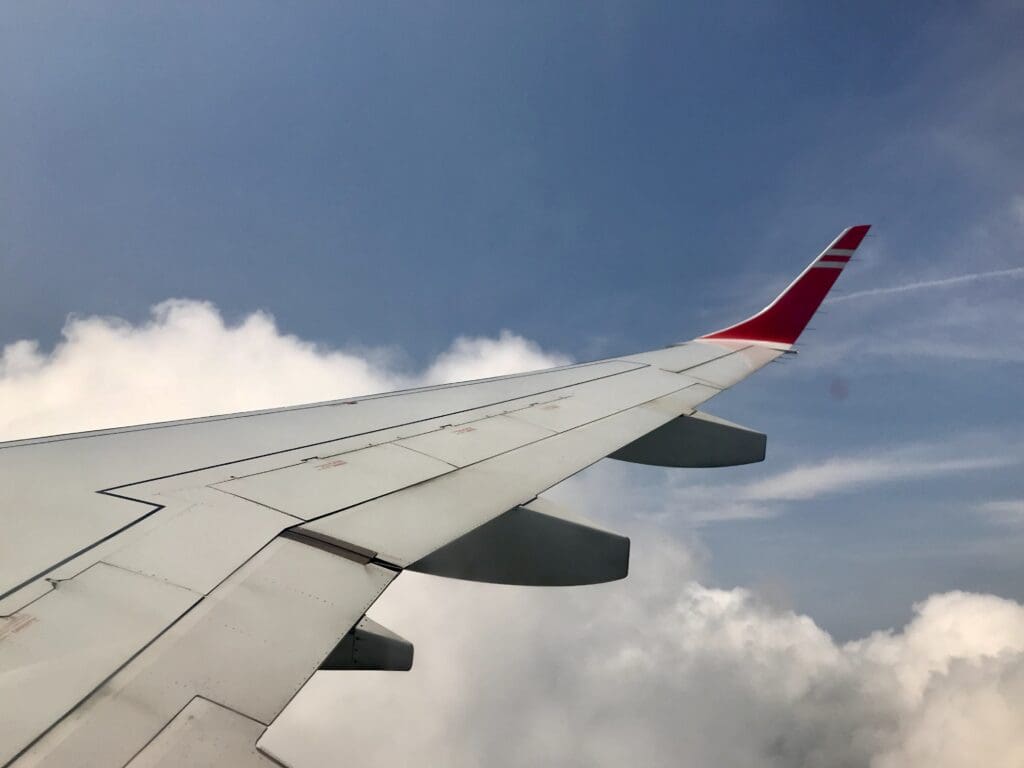
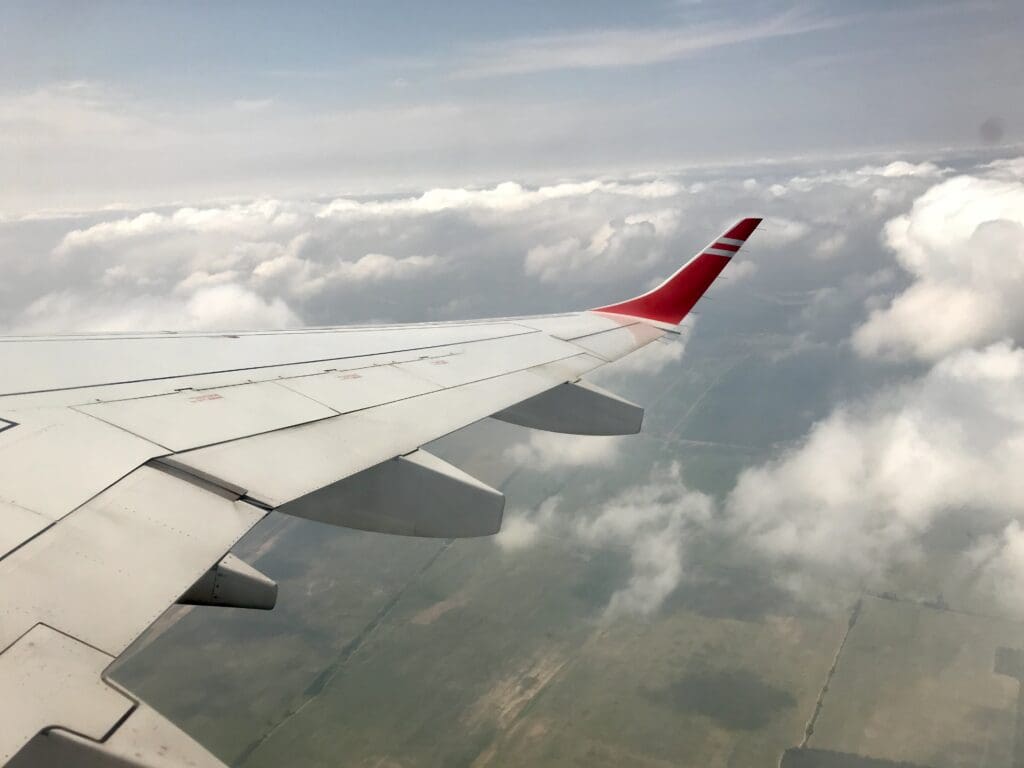
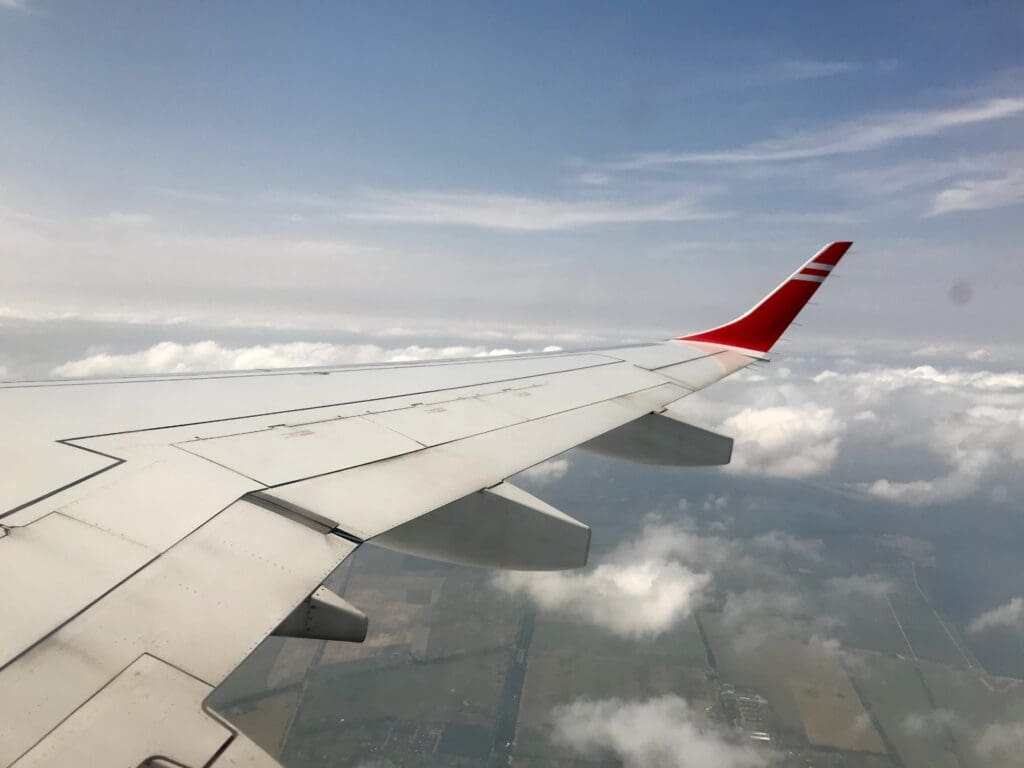
As the aircraft sped southwards, the cabin became filled with the scent of warming airline food and at 1310 the two flight attendants rolled their trolley of boxes and foil trays through the hot cabin to the business class section of the aircraft. Ten minutes later, this was also followed by a drinks trolley. Seeing as only two crew members were on hand to serve the full cabin, unsurprisingly it took some time for the crew members to reach our row. Around 25 minutes after the first trolley had been rolled out, without a word one of the crew members handed (or, more accurately, semi-threw) a Georgian Airways branded cardboard box containing the flight’s meal offering. Opening this up, I found this to contain two slices of cheese, a bread roll, three slices of cucumber and a slice of cake. Admittedly, as my research had led me to believe that some sort of hot offering was in store, I was a little disappointed. However at the end of the day, this meal was perfectly sufficient considering the length of the flight. Around five minutes after receiving this box, I was offered a drink by the other, slightly friendlier crew member. Approximately twenty minutes later, the crew came around collecting the remains of this service after which they disappeared for the rest of the journey – remaining unseen until our approach to Tbilisi.
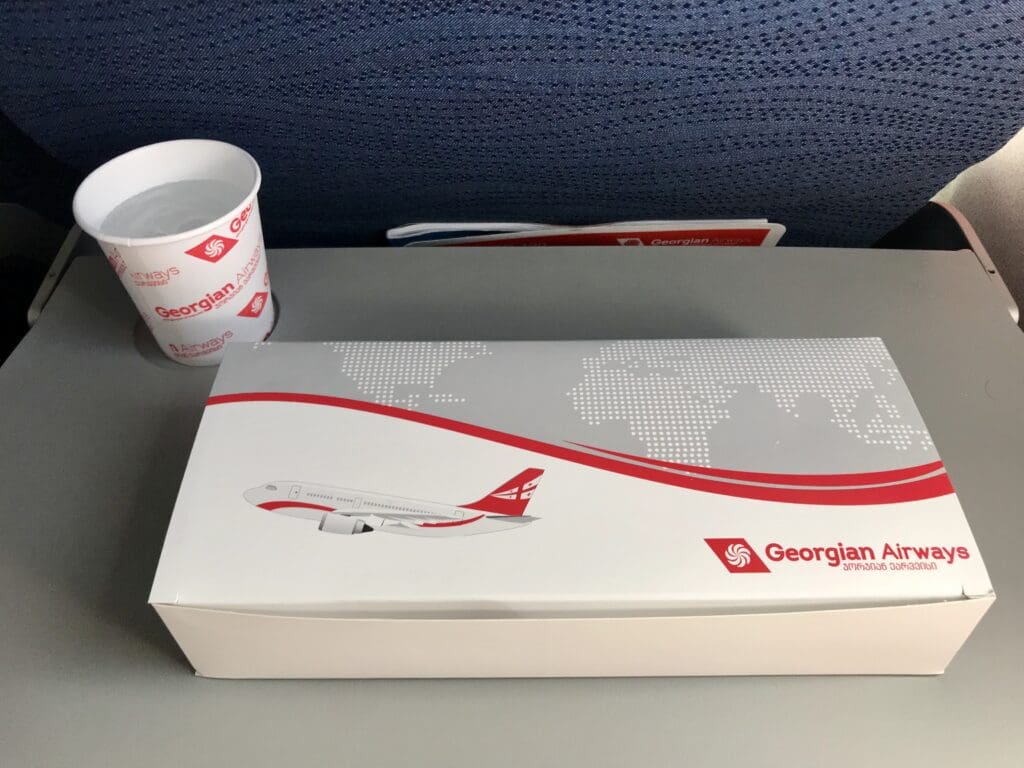
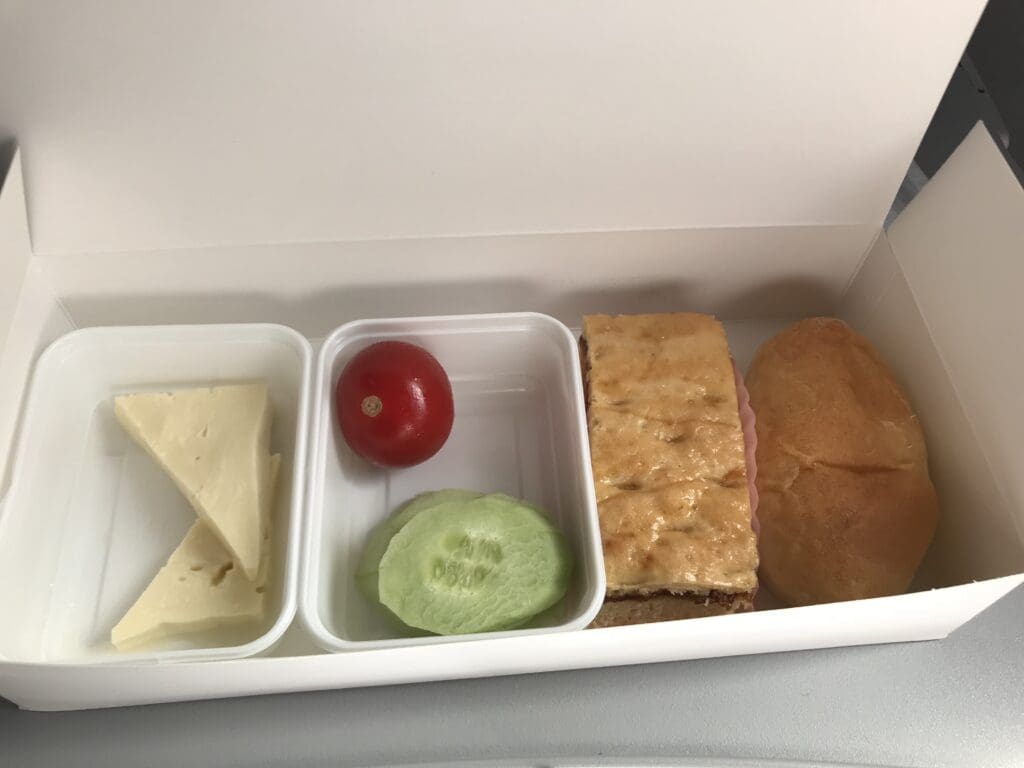
A little under an hour after our departure from Kyiv, the Embraer could be felt banking left once again, this time as we passed around Crimea whilst the clouds temporarily opened, revealing to the blue waters of the Black Sea. As the jet neared the Turkish coastline, the clouds returned to block any view, remaining in place for the remainder of the flight. With little to see outside, I decided to explore the small aircraft by making a trip to the sole toilet for economy passengers, located at the rear of the cabin. As with the rest of the cabin, this did not appear to be in superb condition with plenty of marks and scratches visible all over. However, this did seem to be reasonably clean and was stocked with the basics – tissues and soap.
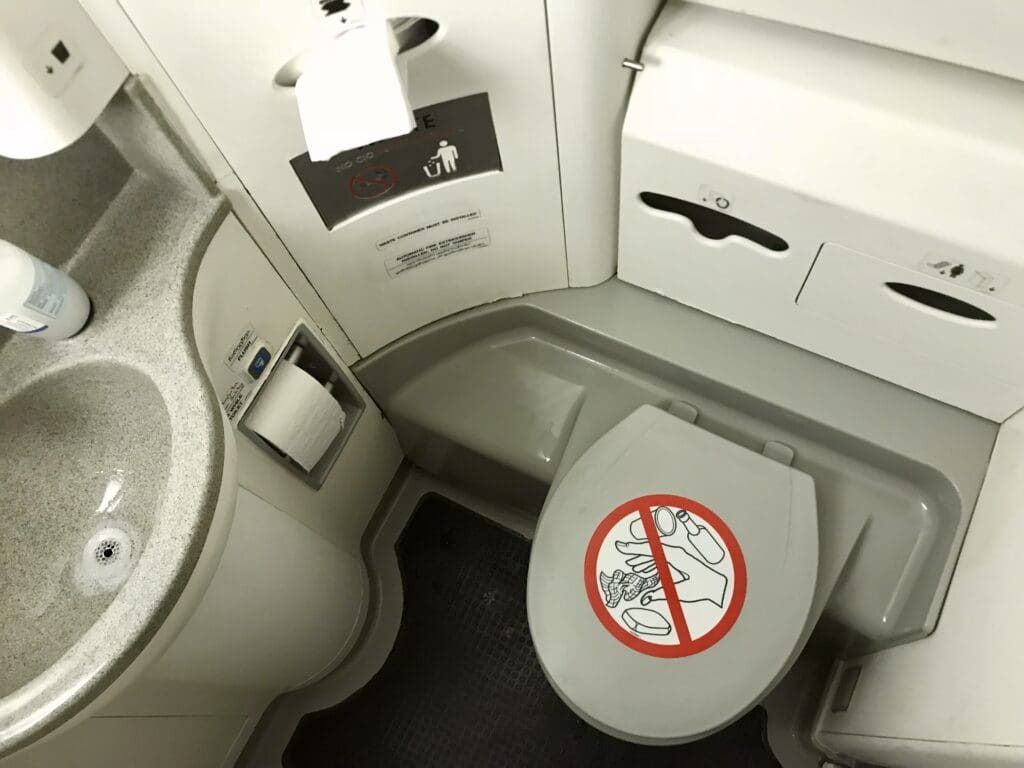
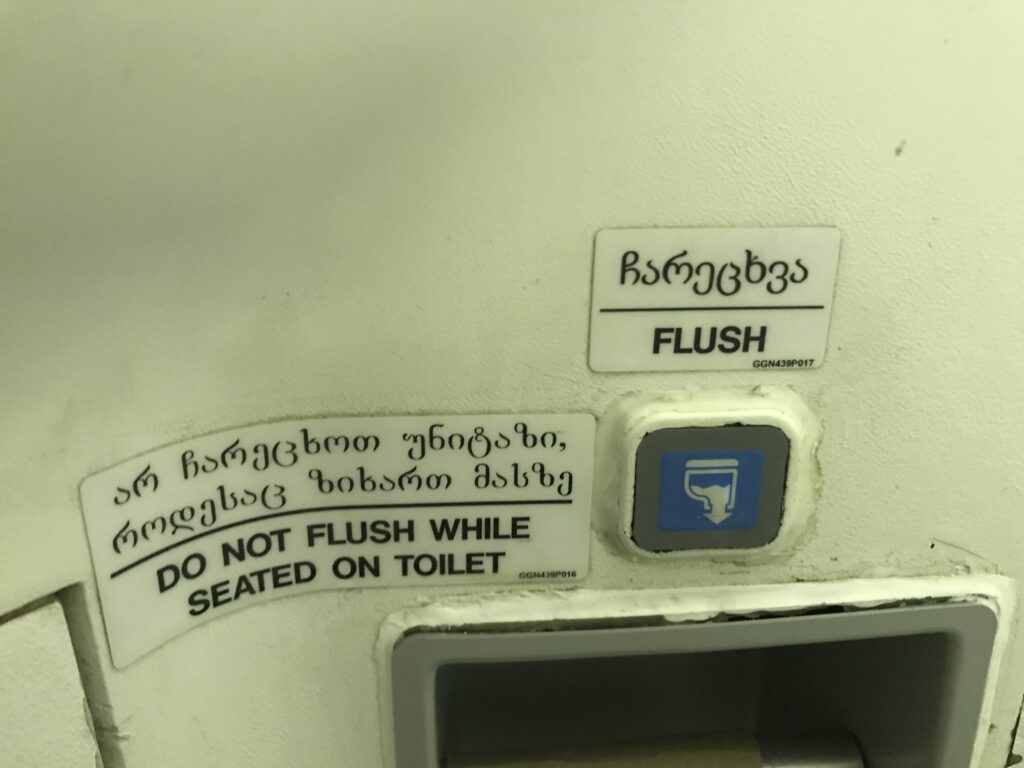
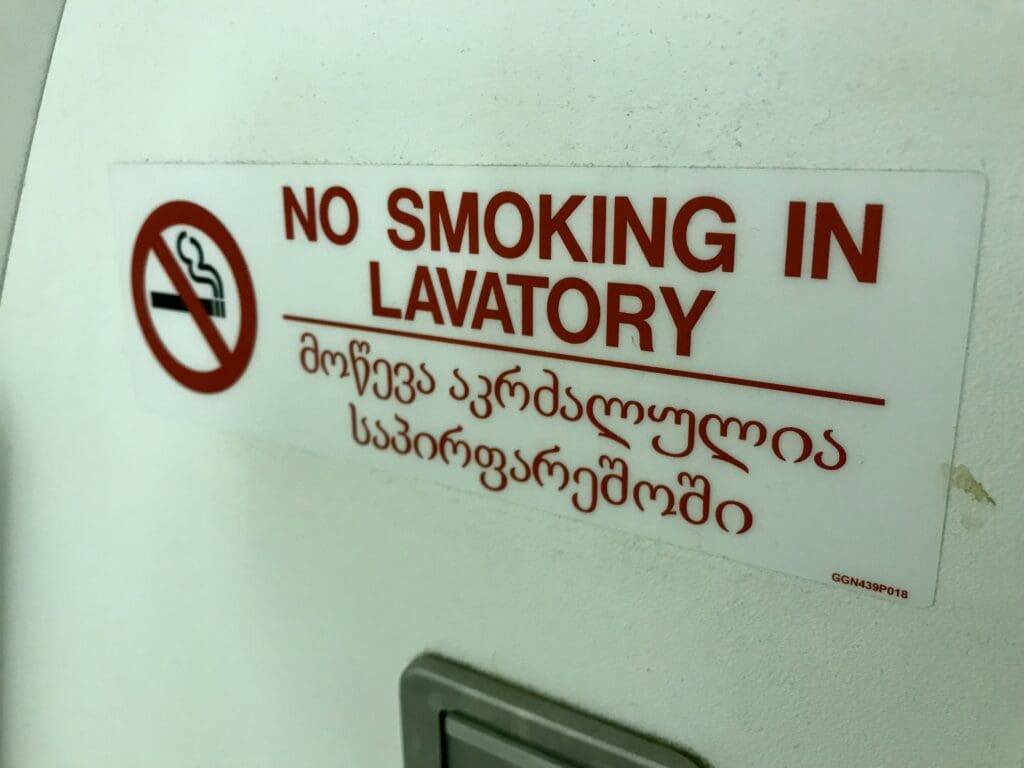

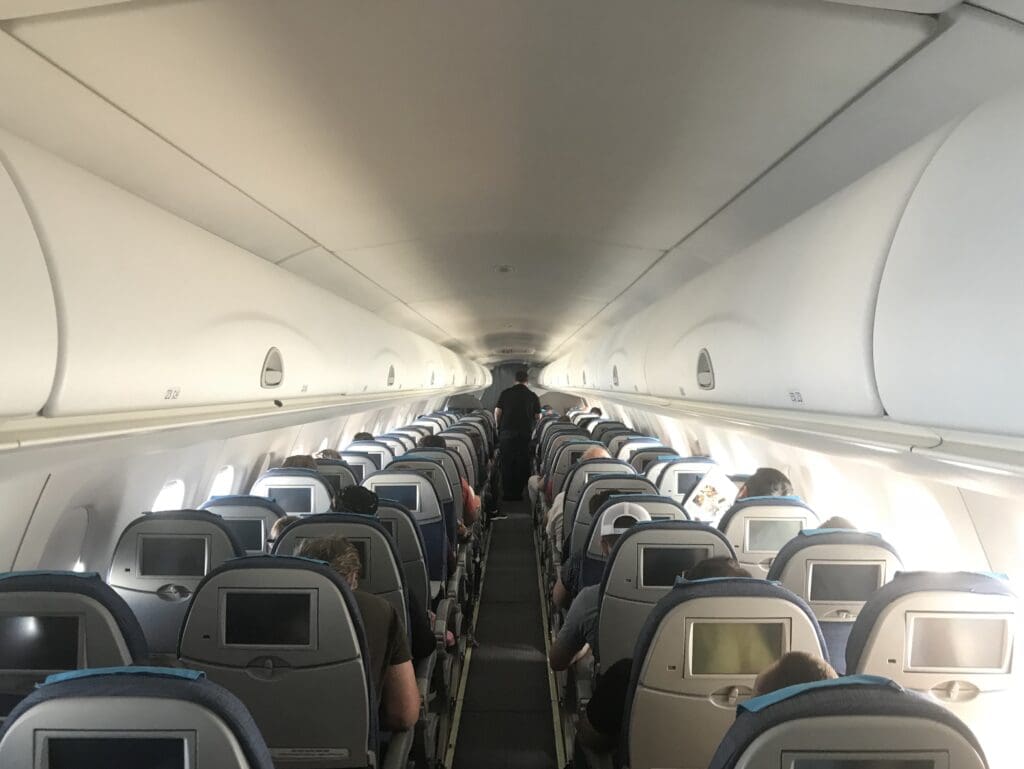
Upon returning to my seat, I decided to turn to the sole form of airline-provided inflight entertainment, the bilingual inflight magazine with articles in Georgian and English. Aside from the airline-related news and information, this appeared to be clearly aimed at enlightening foreign visitors to Georgian culture, history and tourist sights. That particular edition featured articles on top tips when travelling around Georgia, a long piece on the traditional Georgian chokha clothing and a Tbilisi city guide before ending with a short piece on Bologna. By the time I had had a quick read of the magazine, the aircraft was nearing Georgia’s western coastline and soon crossed over this. Heading eastwards over the relatively small country, it was not too long before the aircraft could be felt commencing its descent, with this commencing near the town of Borjomi, famous for its water. Almost as soon as the aircraft commenced its descent, the purser performed an announcement advising all onboard that the aircraft would be arriving in Tbilisi in twenty minutes’ time, giving an update on the weather before ending this with the usual pre-arrival advice regarding tray tables, seatbelts, seatbacks and window shades.
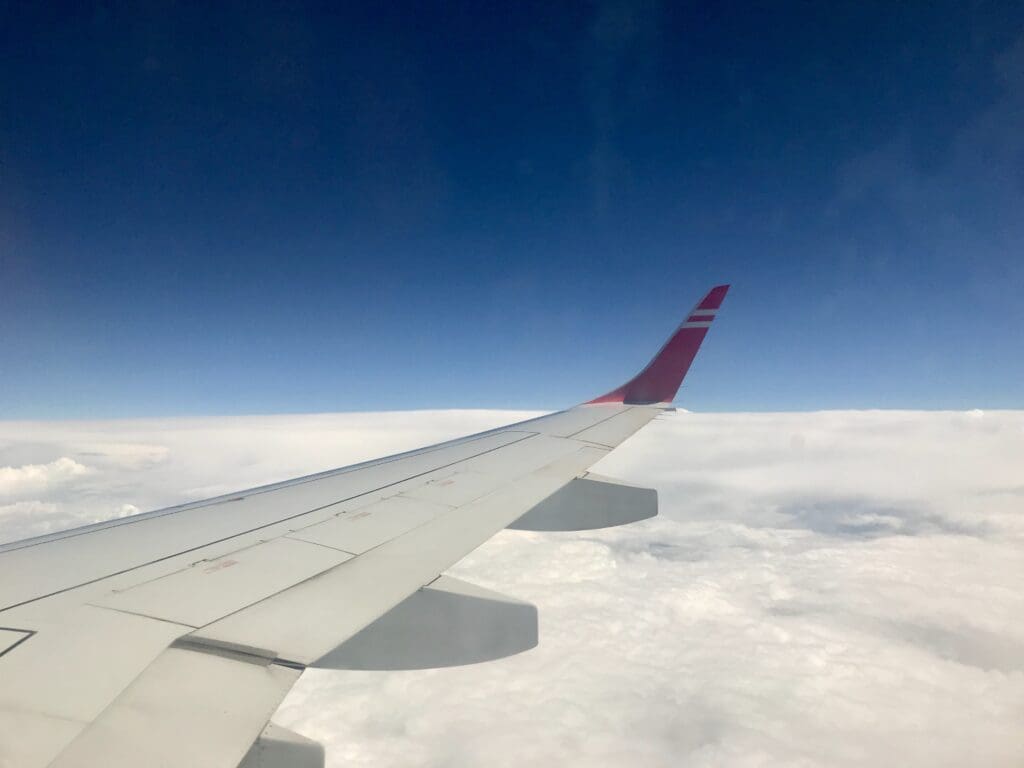
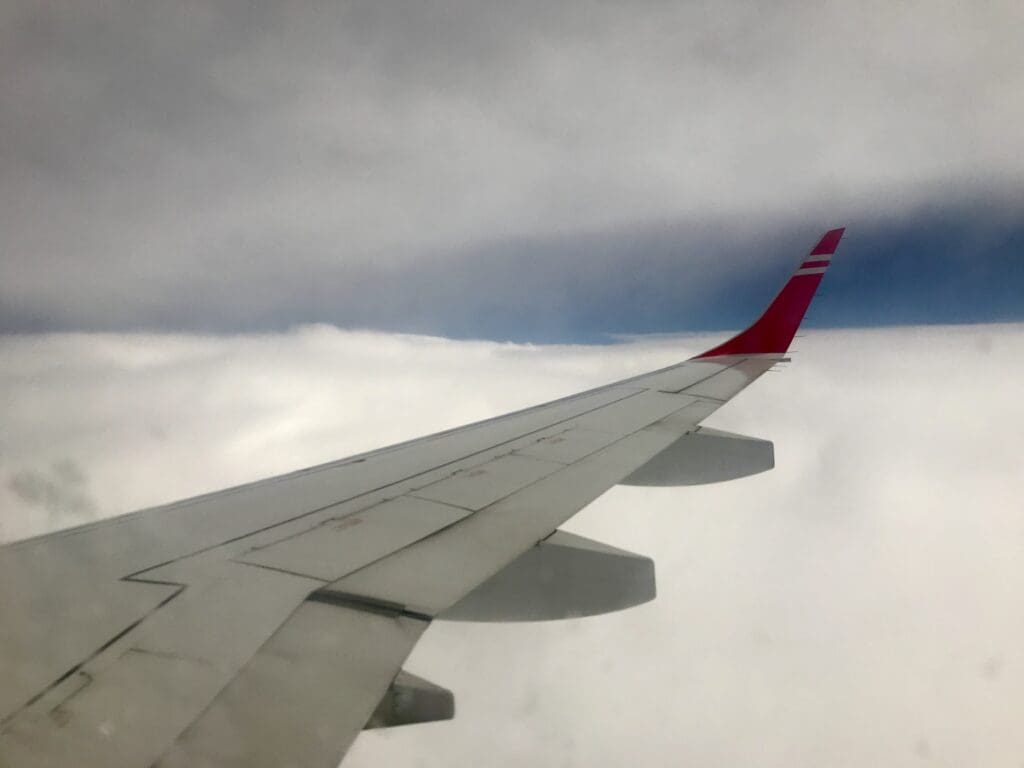
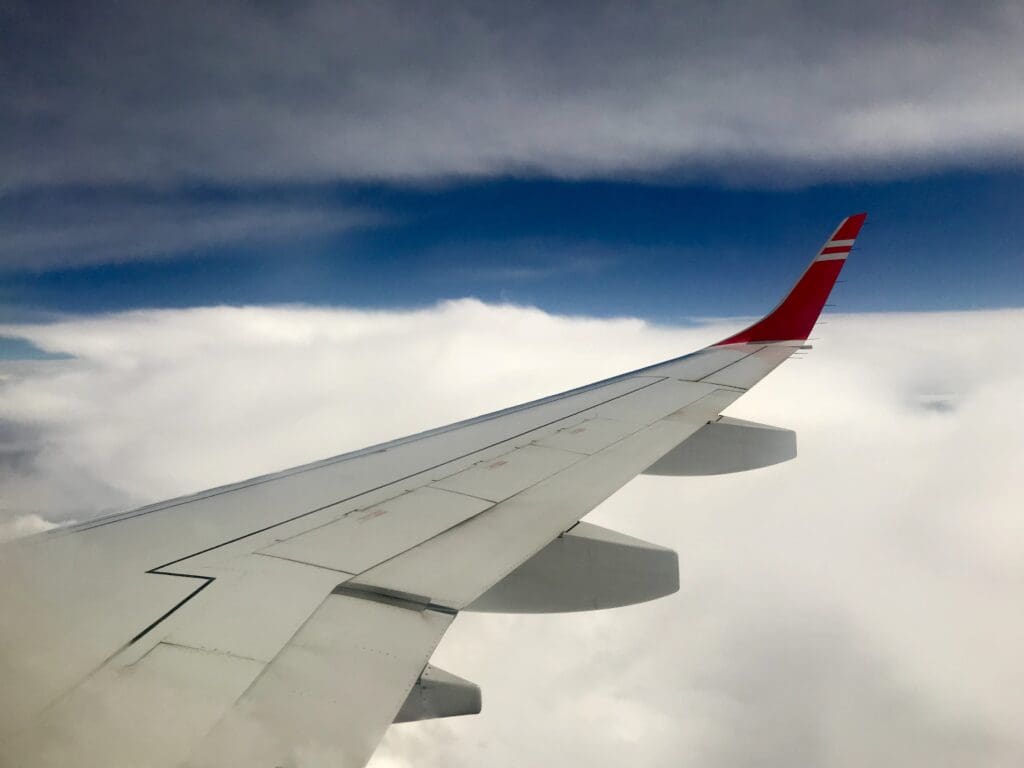
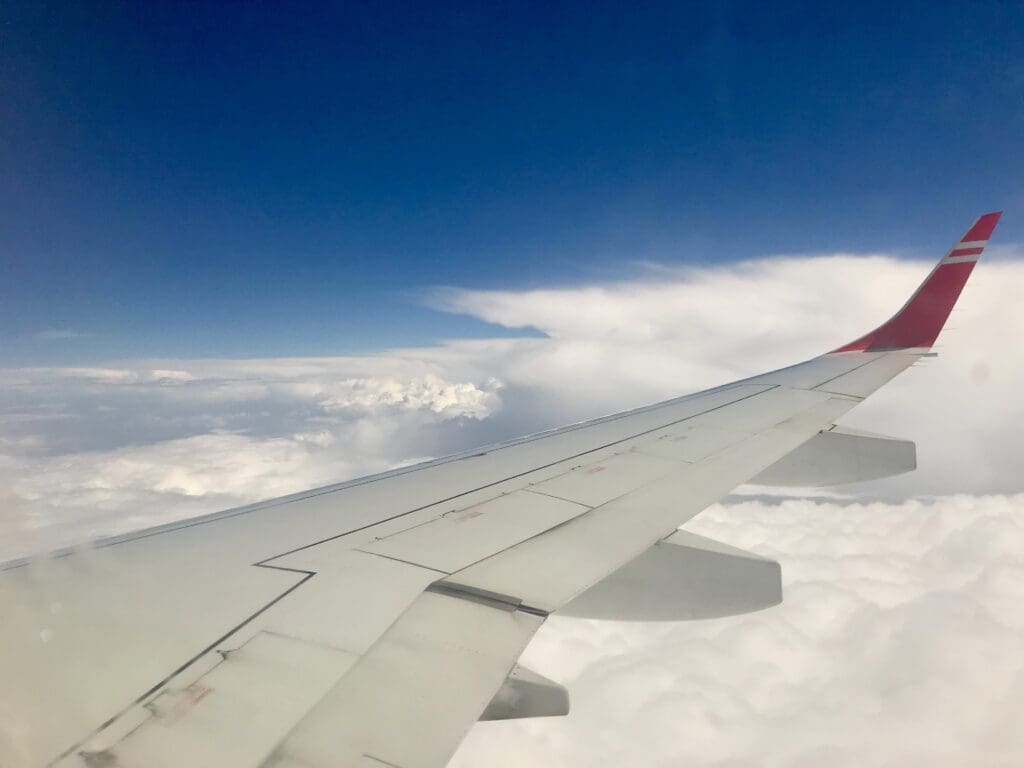
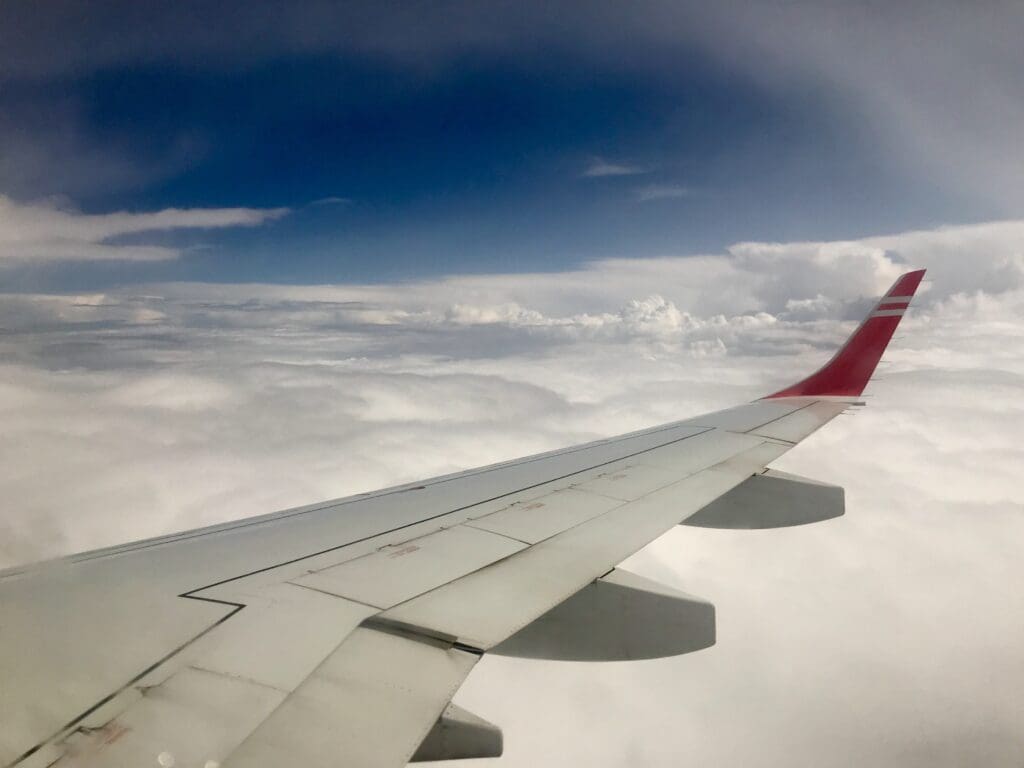
A little over ten minutes after the aircraft commenced its descent, the aircraft descended into the clouds before the diverse Georgian landscapes soon appeared below. That afternoon our first glimpse of the country came in the form of a hilly area that was largely covered by forests. These hills then flattened and the landscape transformed into fields which became sandier in colour as we headed eastwards towards the capital. After flying over the Mtkvari River, the landscape once again changed, this time flat green fields appeared before being replaced by a sandy looking arid area which became greener as aircraft neared the airport.

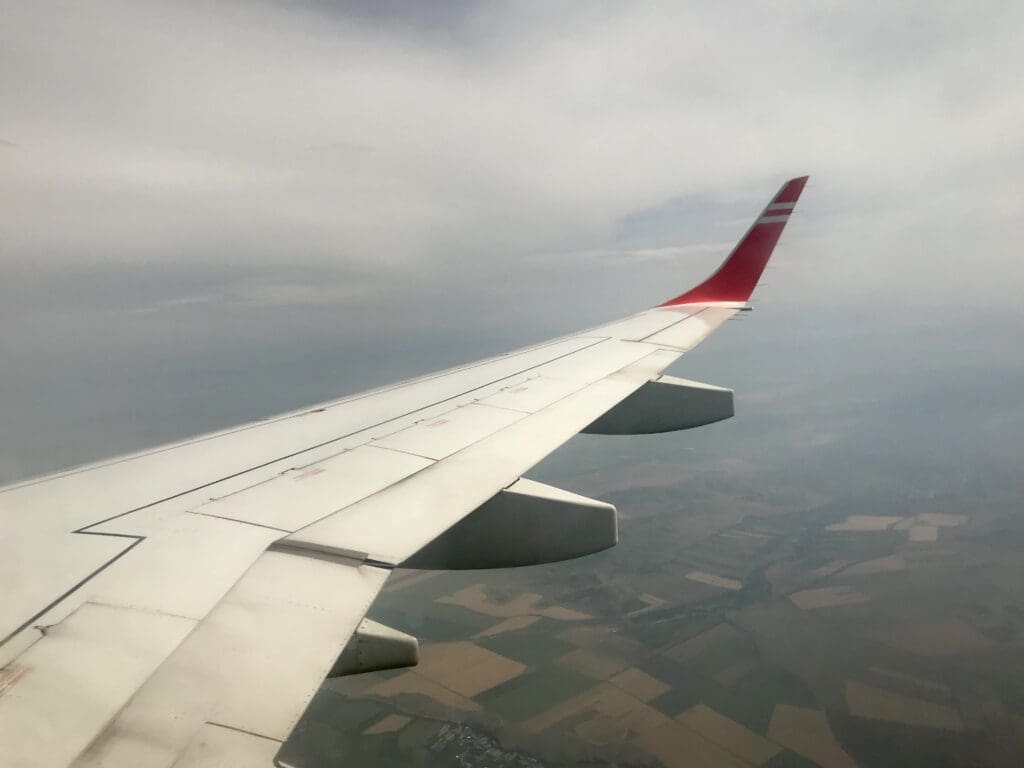
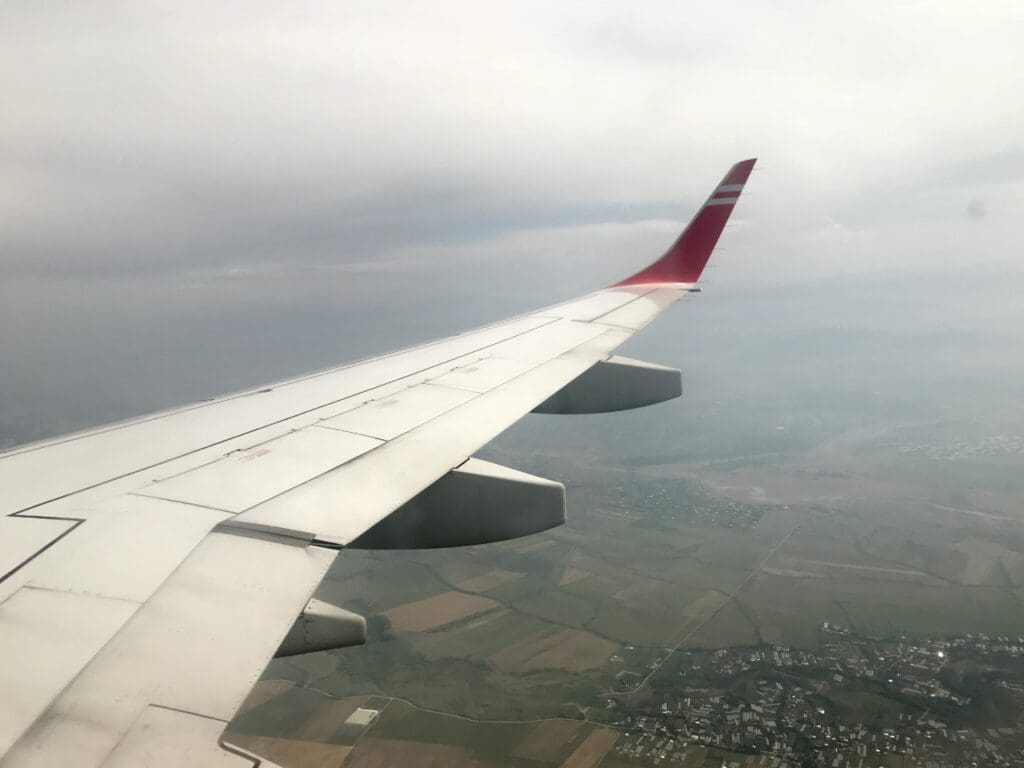
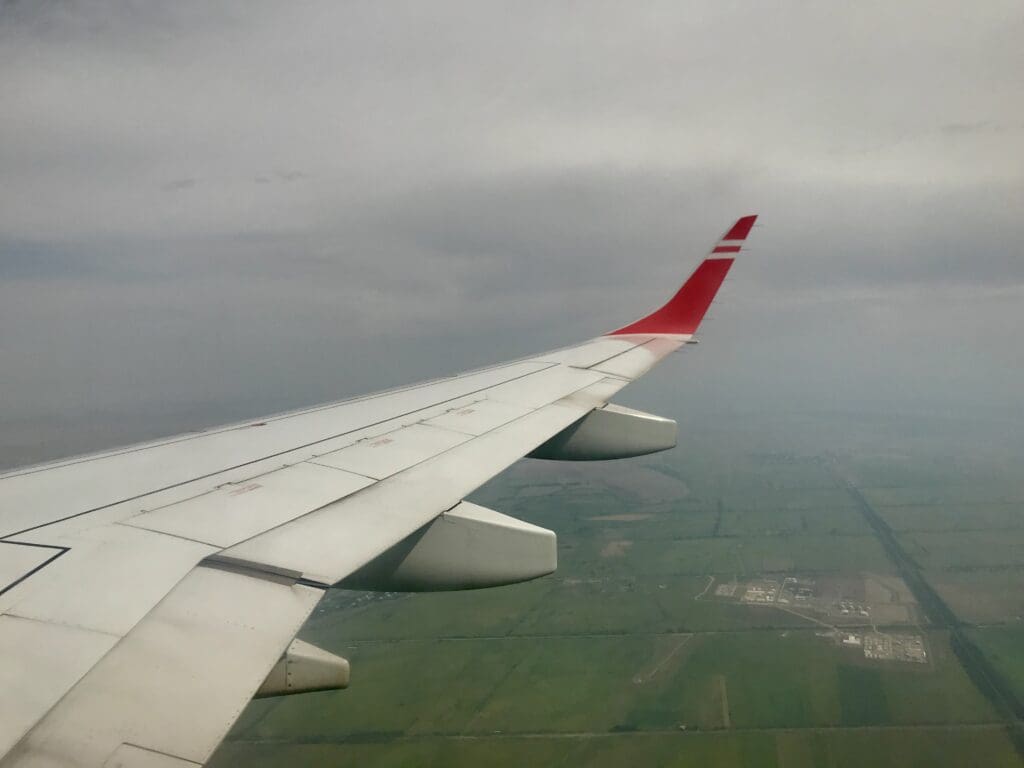
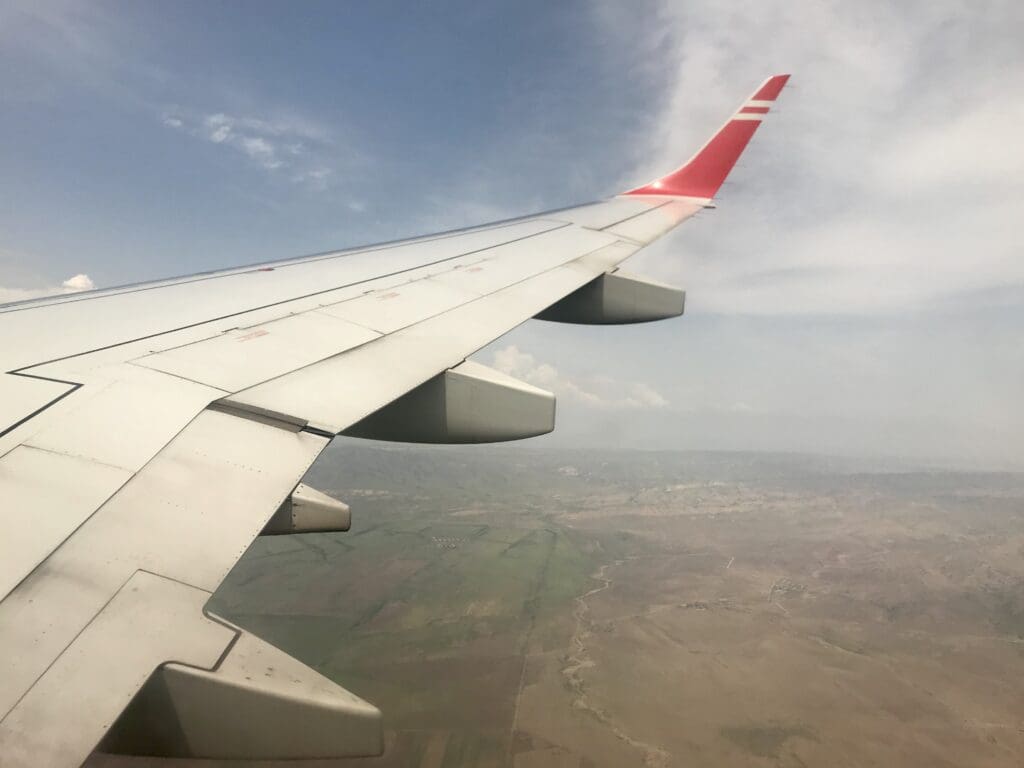
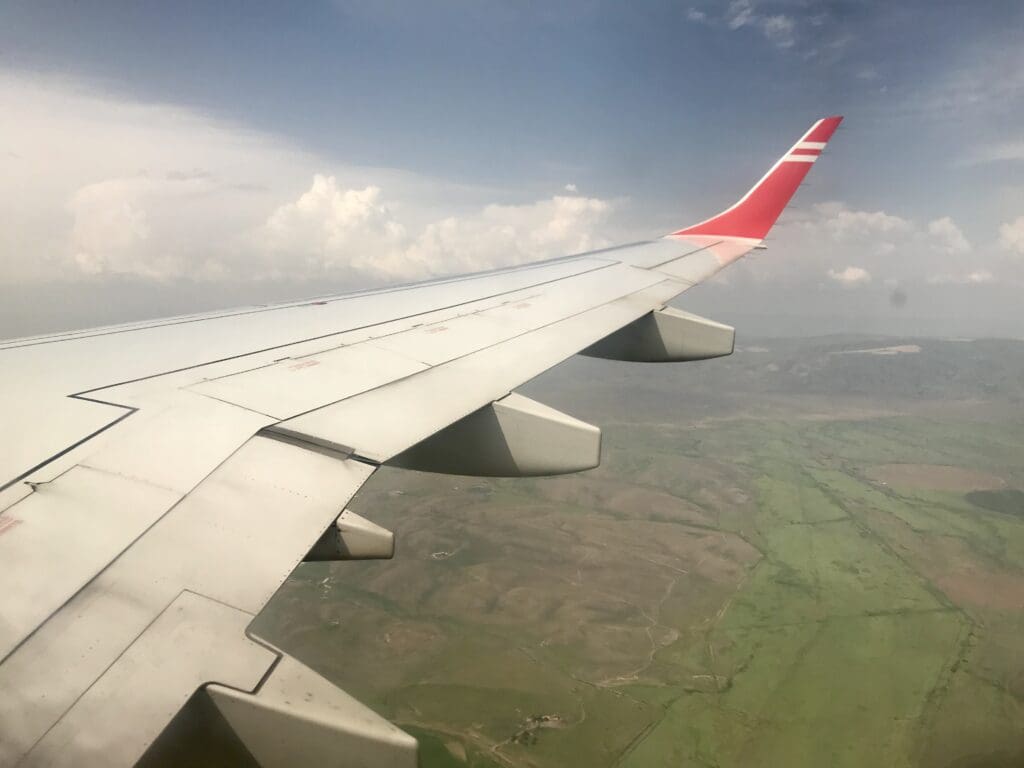
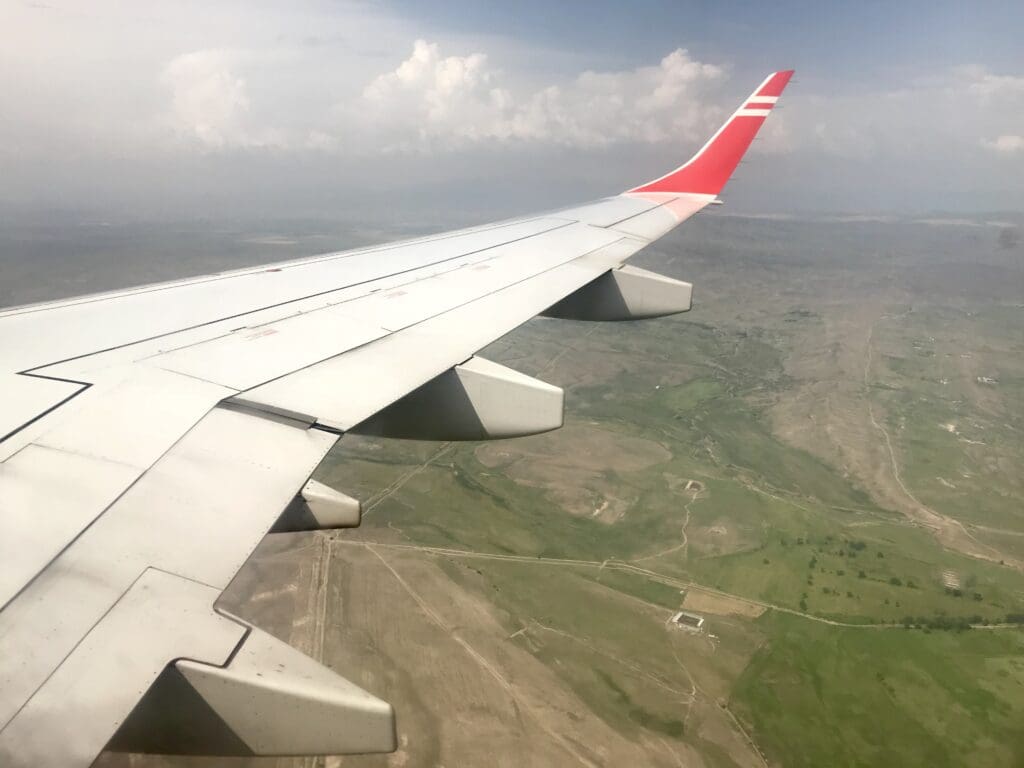
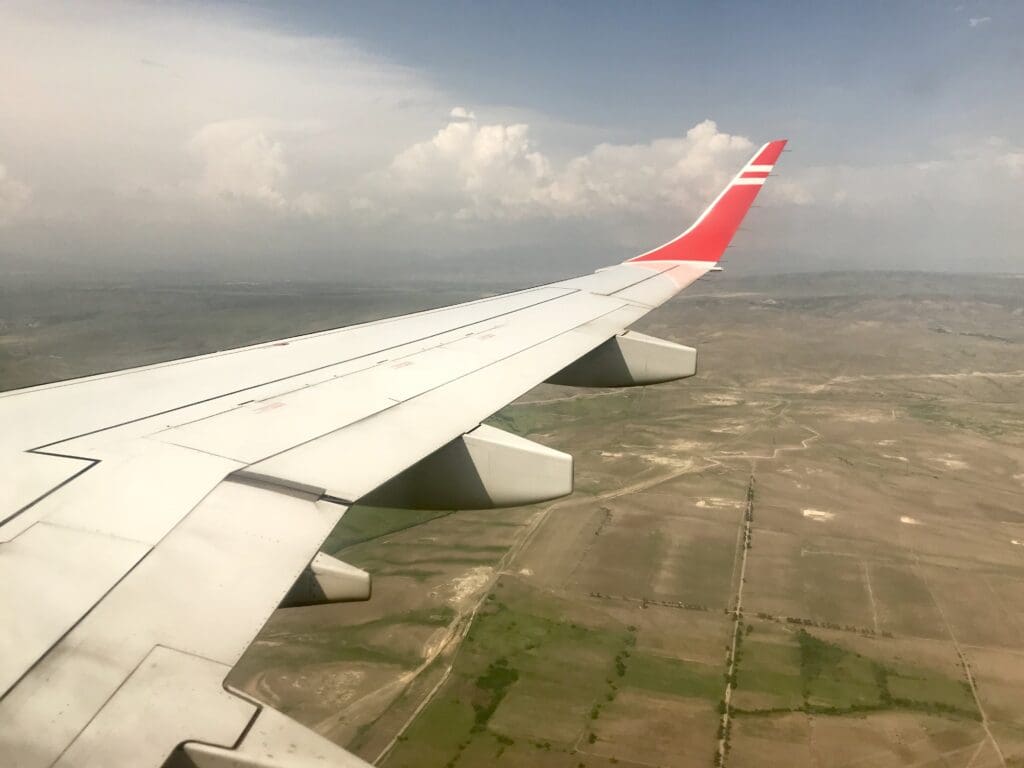
As the aircraft sank downwards, the flaps were lowered in stages before the gear was extended as the aircraft hit several lumps and bumps as it neared the capital. At 1619, the Embraer gently floated down over the airport’s boundary and made a smooth touchdown on runway 31L. This arrival was then followed by some relatively gentle braking before the jet taxied right off the runway and commenced its short journey to the airport’s modern terminal. As with many airports in the former USSR, Tbilisi Airport is a home to a treasure trove of interesting stored aircraft that are unfortunately highly unlikely to fly again. However, unlike at many other airports where such collections are often solely made up of Soviet built types, a reasonable number of those in Tbilisi took the form of classic Western-built jets. During the taxi to the terminal I spotted a couple of Air Georgia Boeing 747-200Fs, a TCA Boeing 727-200F and a Sky Georgia DC-9.
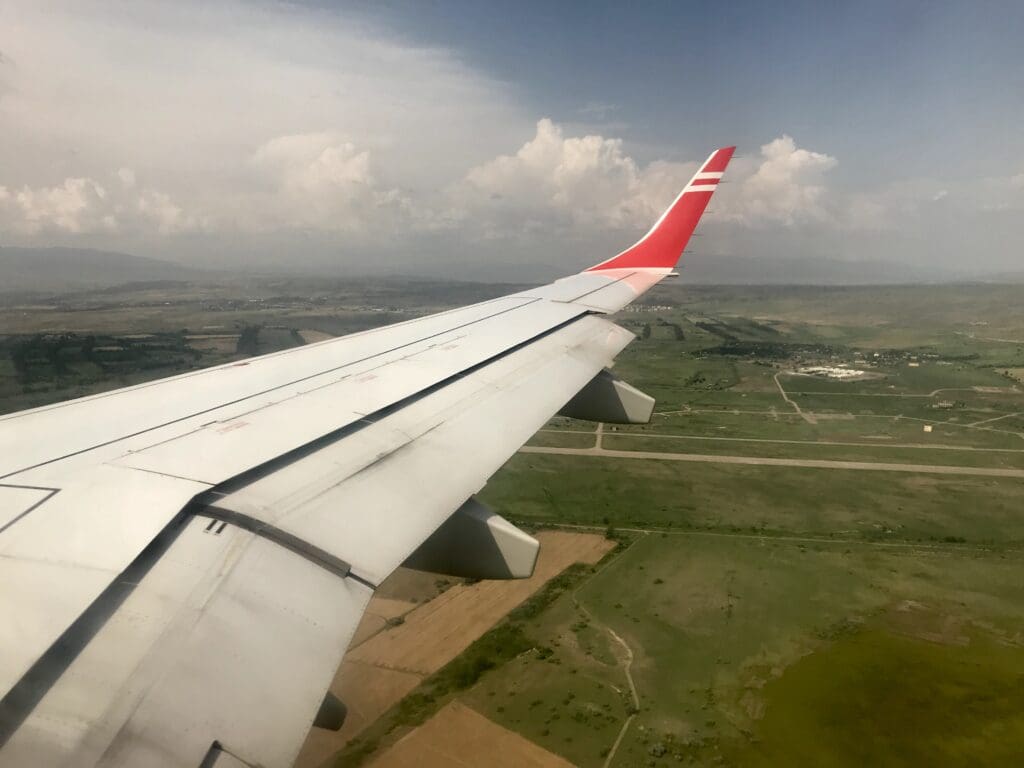
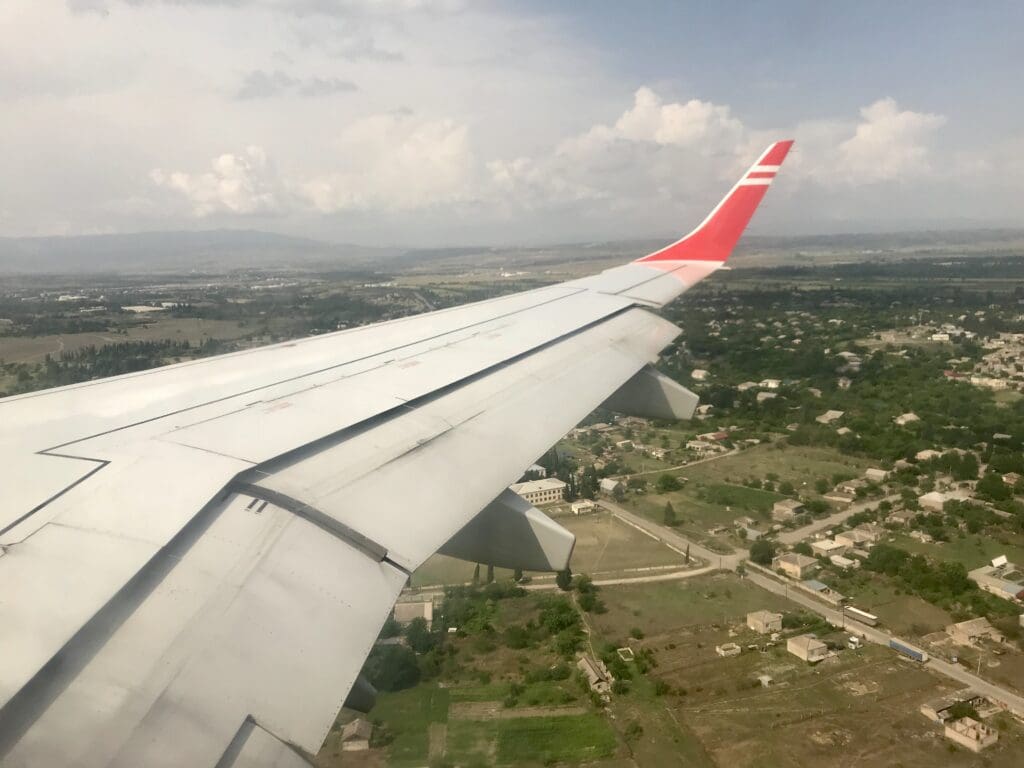
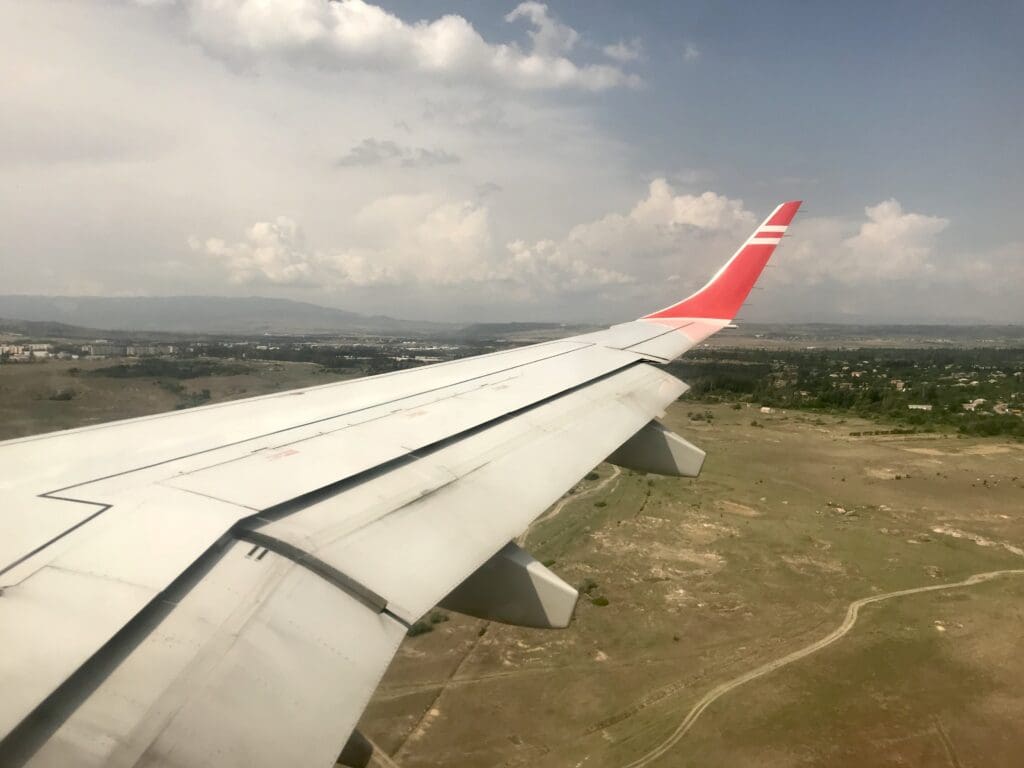
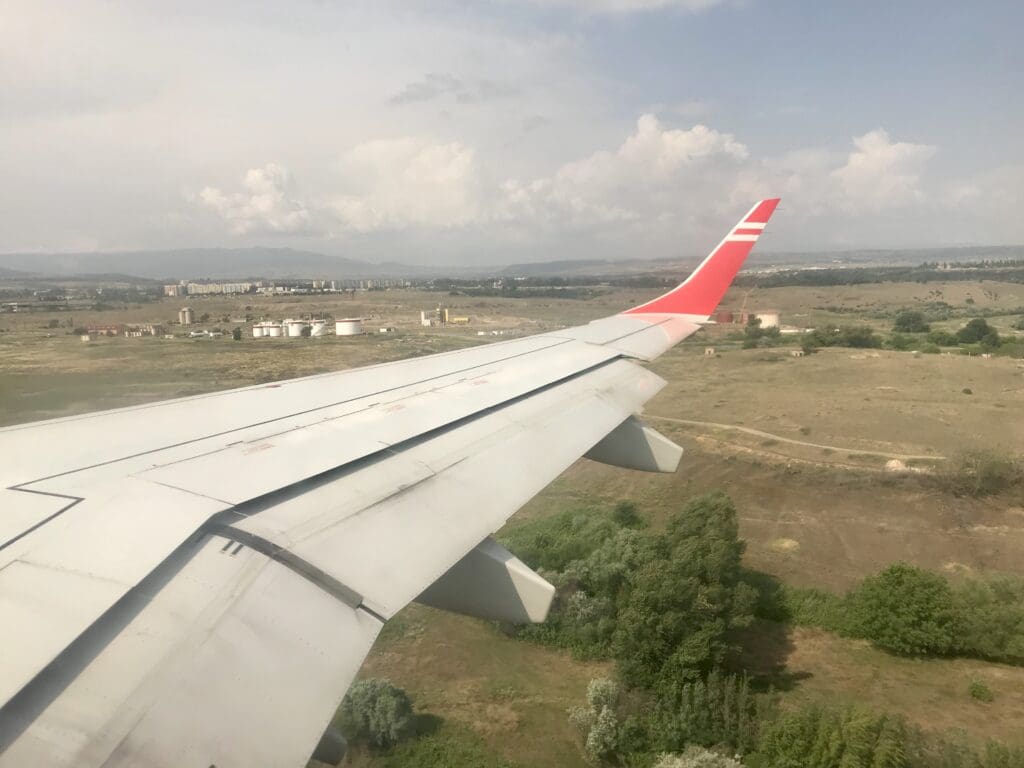
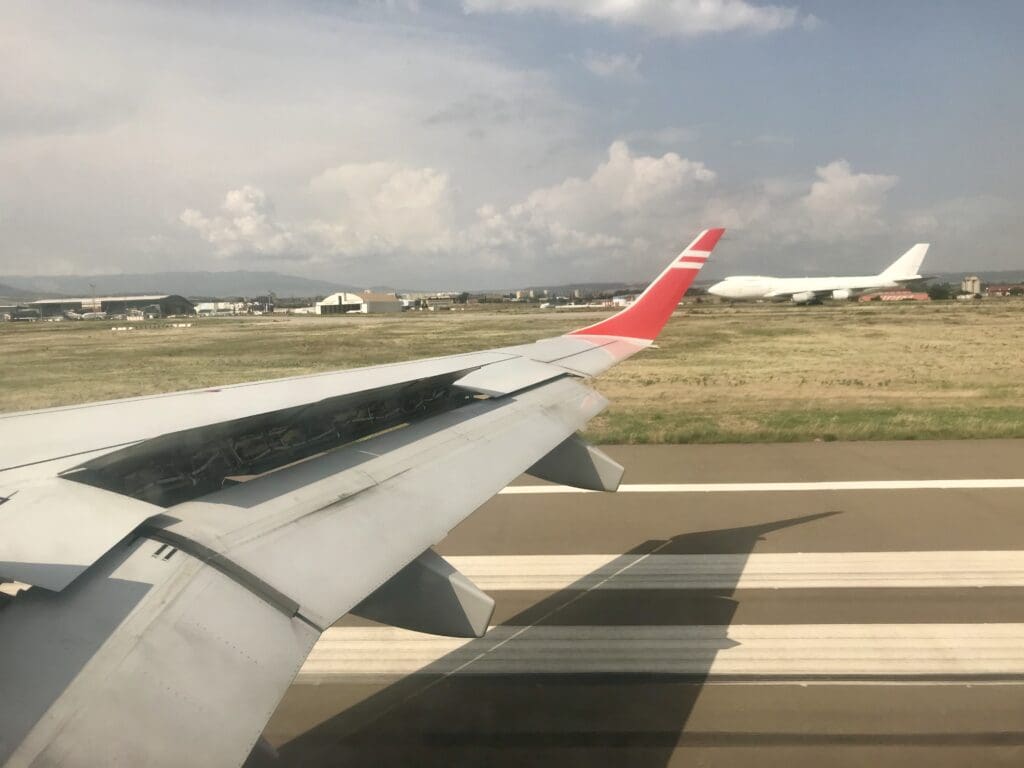
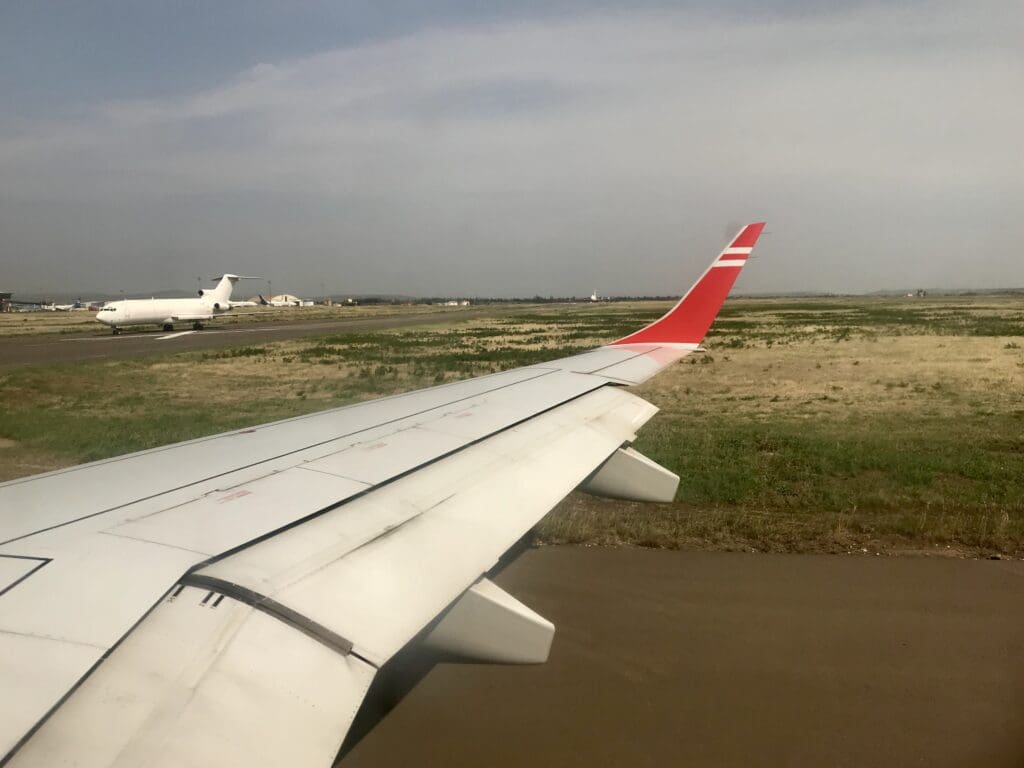
A few minutes after touching down, the Embraer arrived at the terminal which at that time appeared to be rather busy. Waiting here, a locally based MyWay Boeing 737-800 could be seen as well as visitors from Kyiv (a UIA Boeing 737-800), Kuwait (an Olympus Airways A319 operating for Wataniya Airways) and Sharjah (an Air Arabia Airbus A320). After travelling the length of the terminal, the aircraft pulled up to a gate at the end of this at 1625, five minutes ahead of schedule.
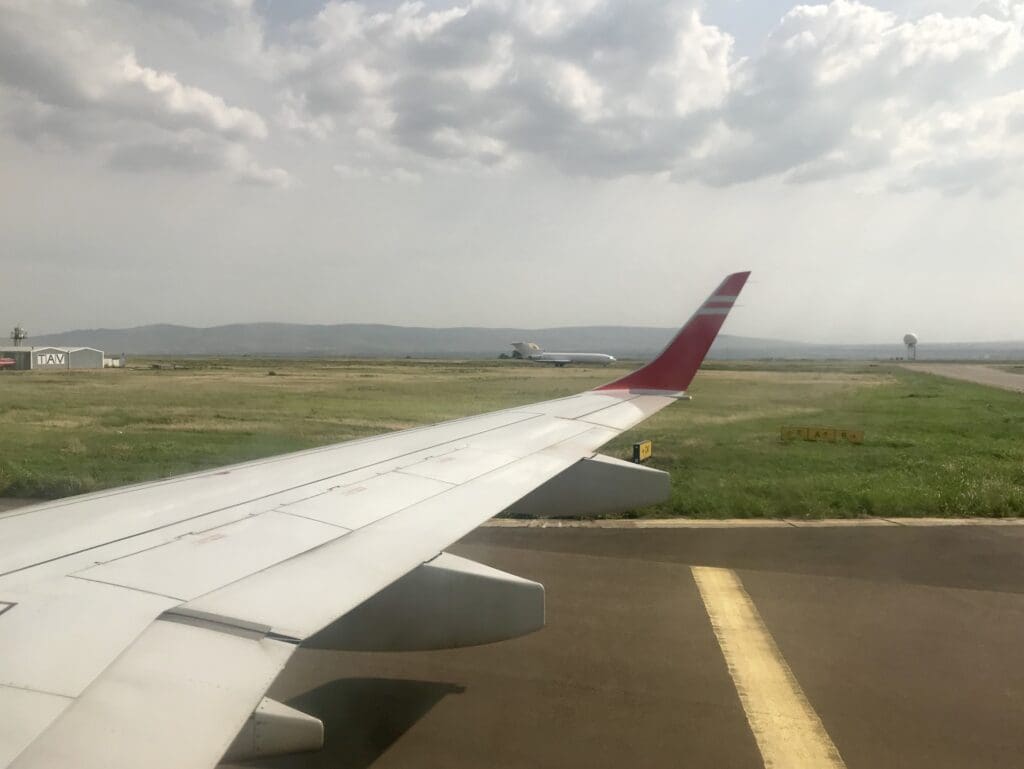
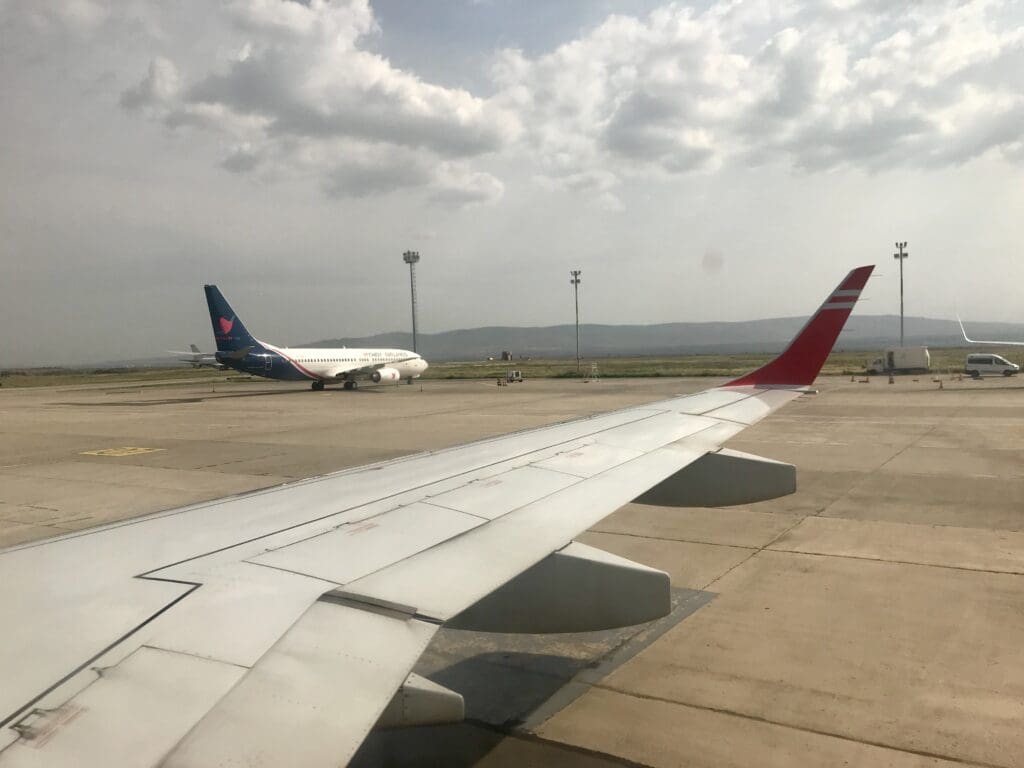
Once the engines powered down, there was no rush to escape the aircraft, which was a good thing seeing as it would be another five minutes or so until the jetway was connected and the main cabin door opened. Thankfully, once disembarkation commenced, this was a quick process and I soon found myself heading up the glass jetway and into Tbilisi’s small yet modern terminal. Unfortunately, the queues for immigration that afternoon were gigantic, and it took around thirty minutes of waiting until I was able to reach one of the counters. However, on the plus side, this long wait to enter Georgia ensured that by the time we reached the luggage collection hall, our suitcase could already be seen spinning around on one of the carousels. Once we picked this up, after stopping for a local SIM card, we headed out of the airport and caught the number 37 bus to the centre of Tbilisi.
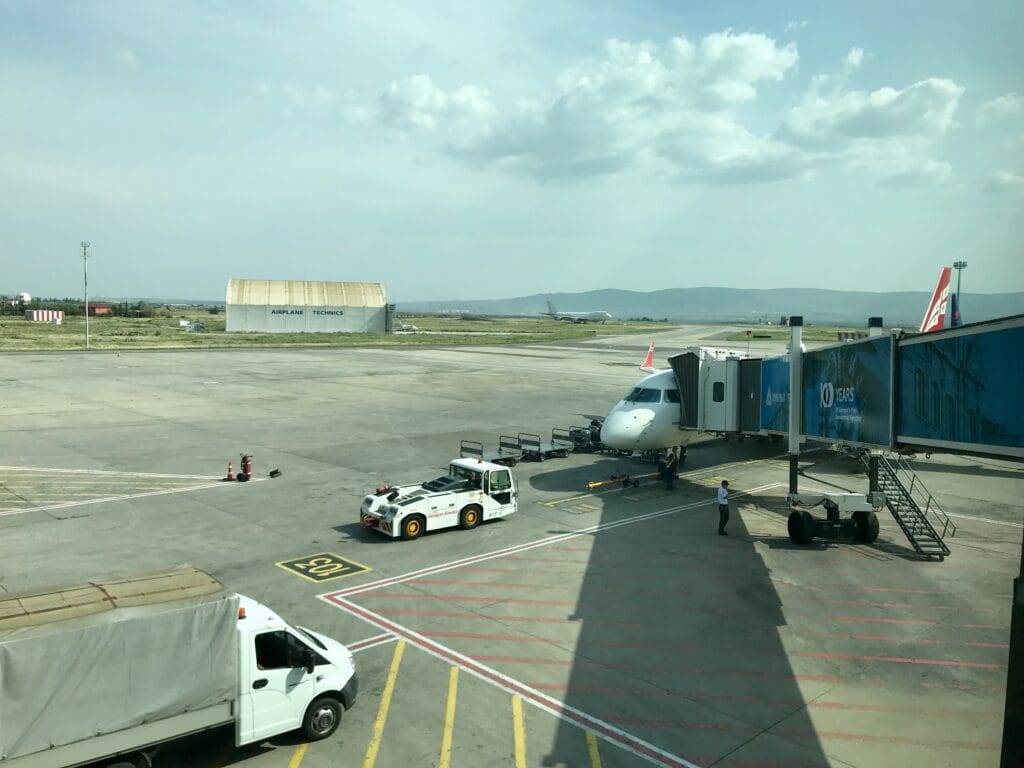
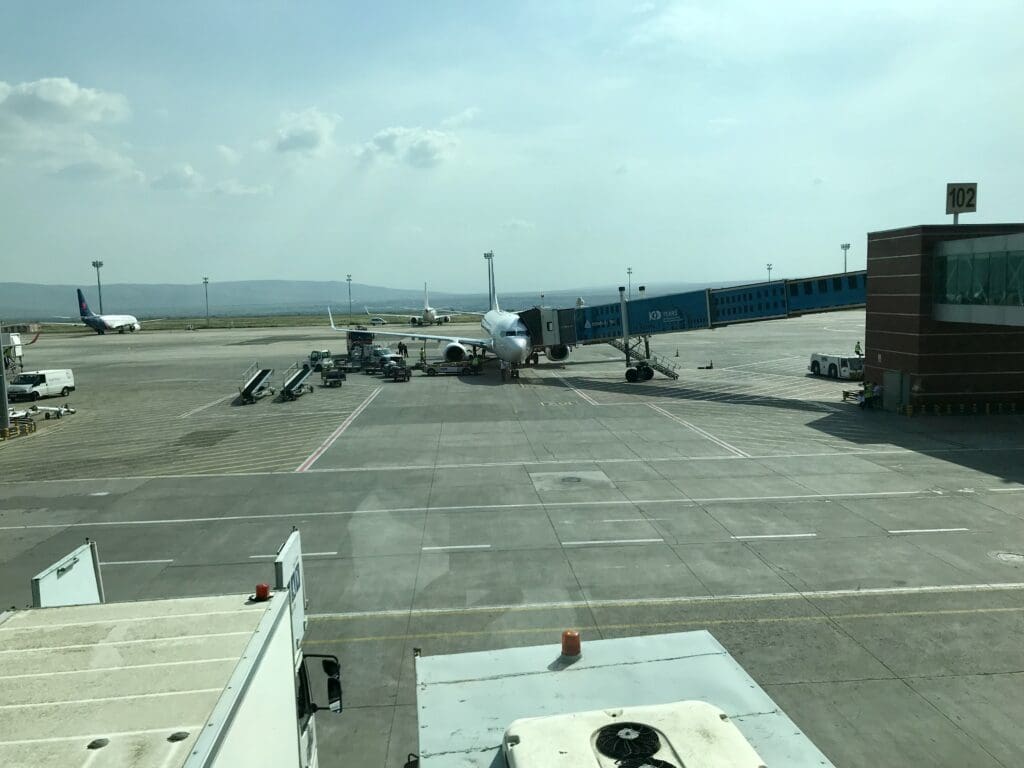
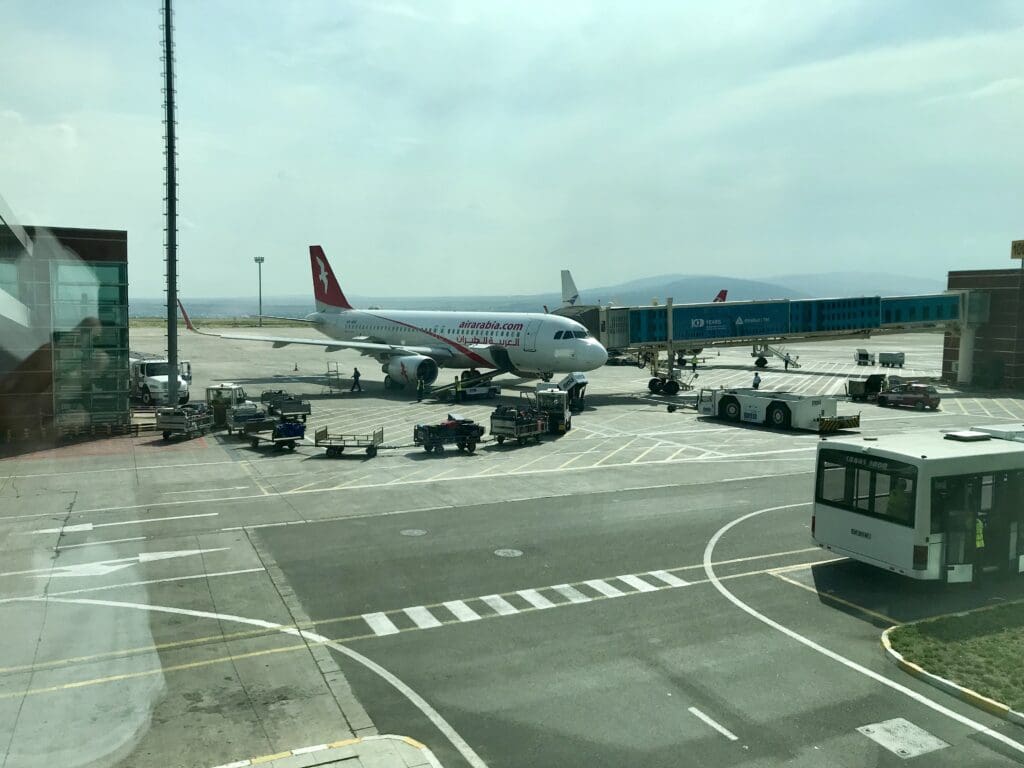
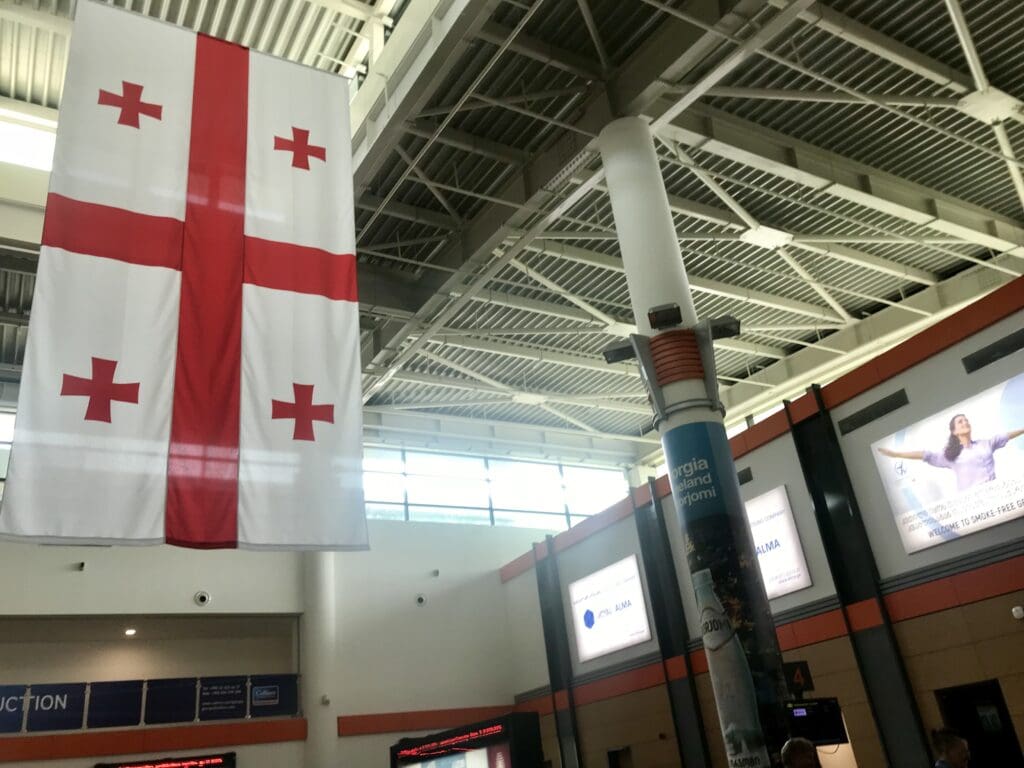
Summary
For a flight of just under three hours, Georgian Airways provided an acceptable experience, although they failed to offer anything particularly special. The crew performed their duties but were fairly cold when it came to customer service, something that, having observed their interactions with both Georgian and Ukrainian passengers cannot be attributed to any language barrier. However, on the other hand, the aircraft proved to be reasonably comfortable if not a little tired looking, the light lunch service was appreciated and the flight arrived in Tbilisi ahead of schedule. To conclude, my flight with Georgian Airways was by no means my best flight, but also was far from my worst.

